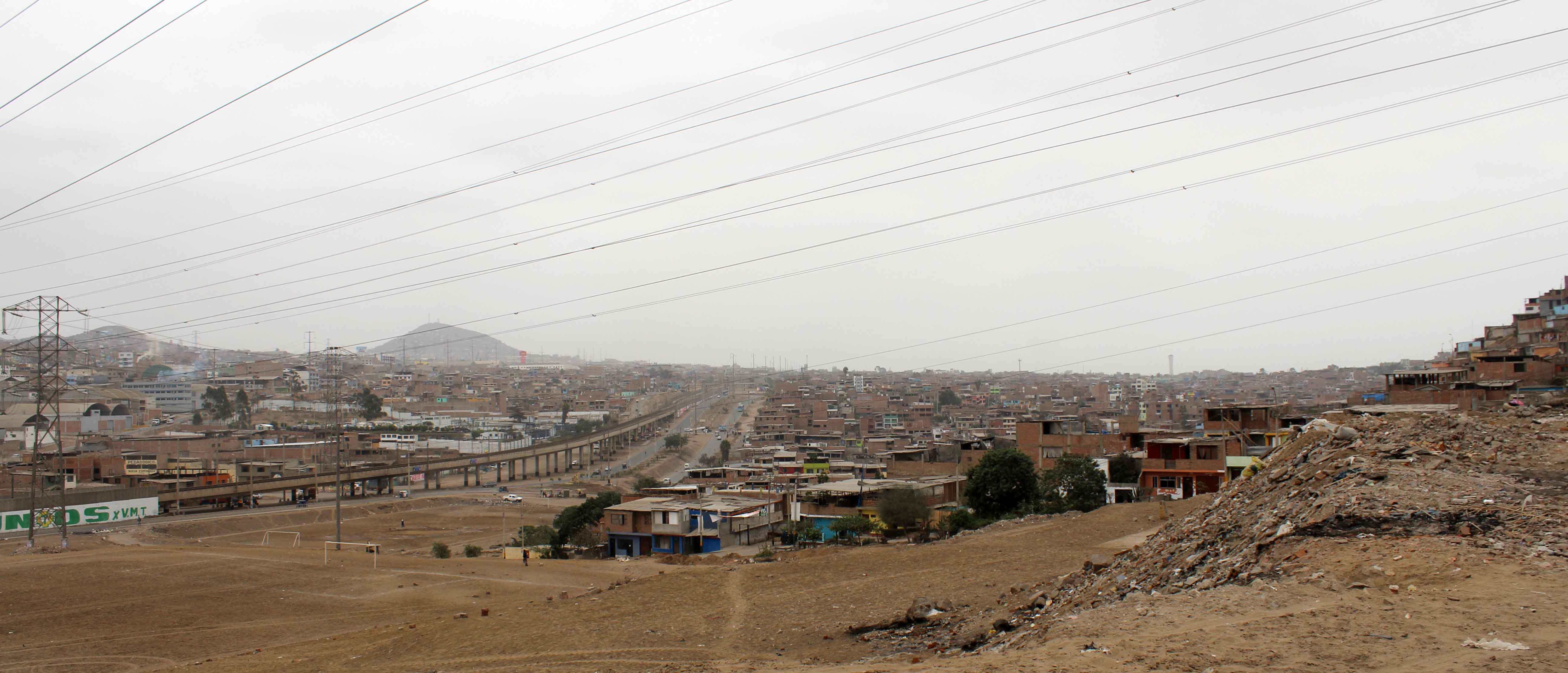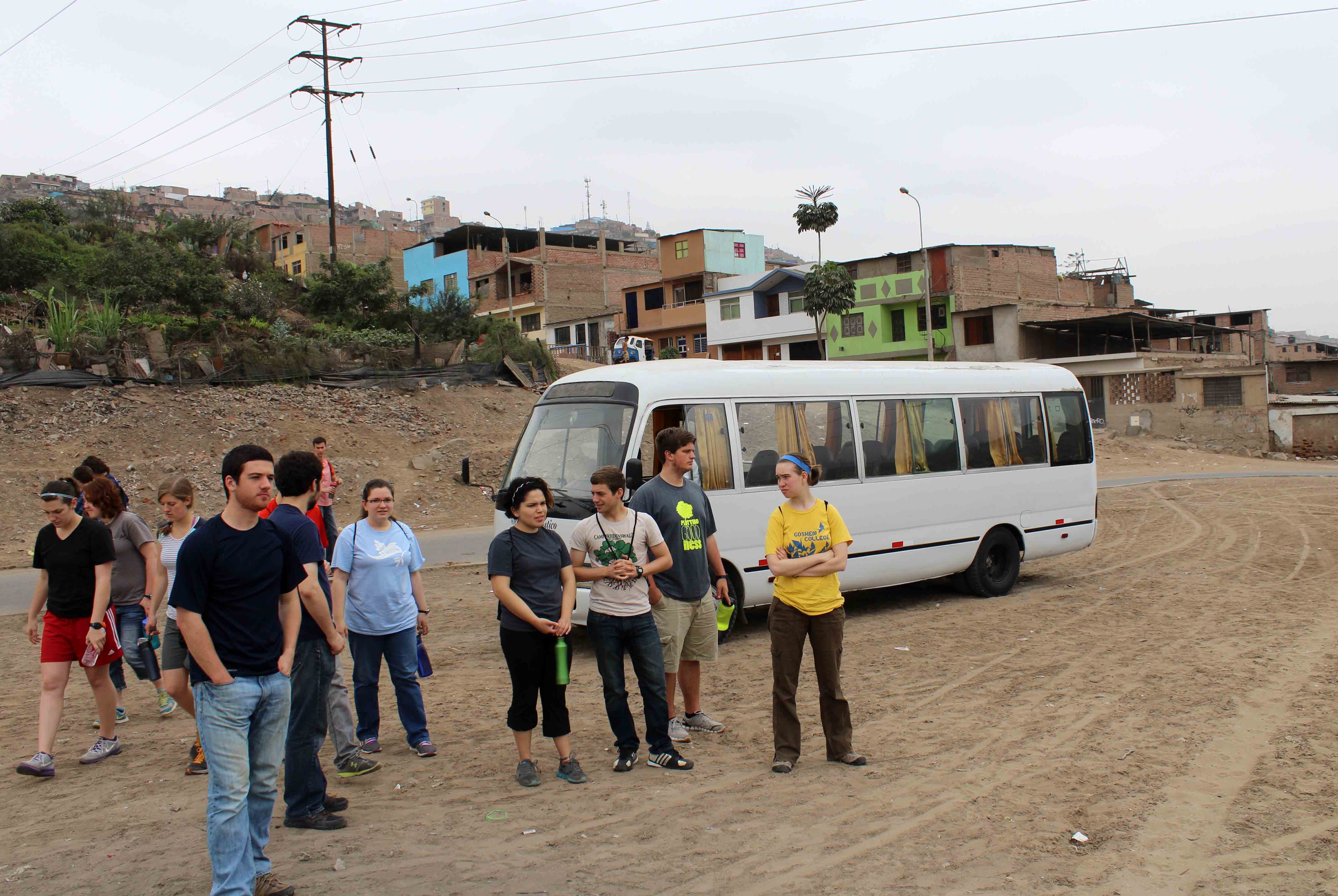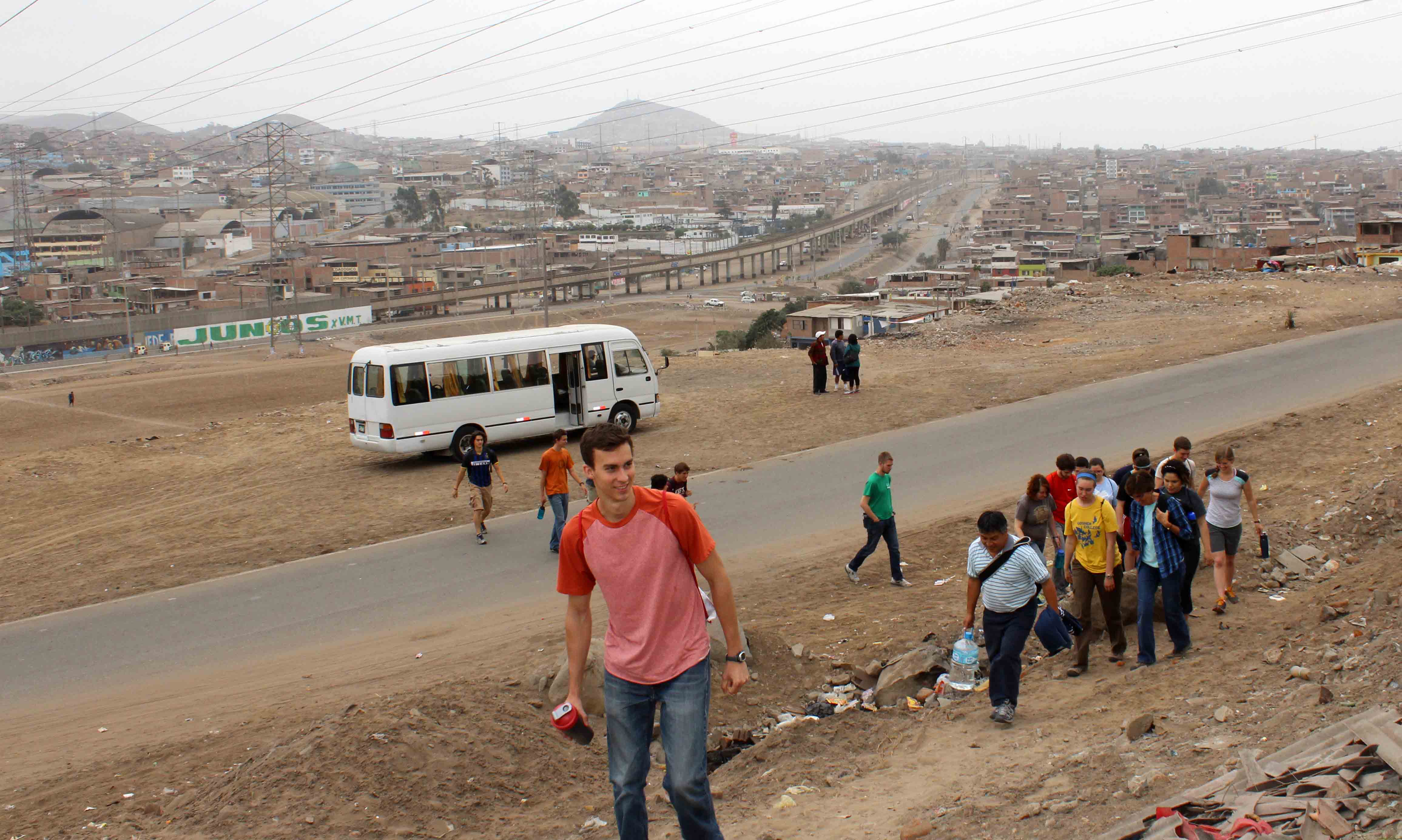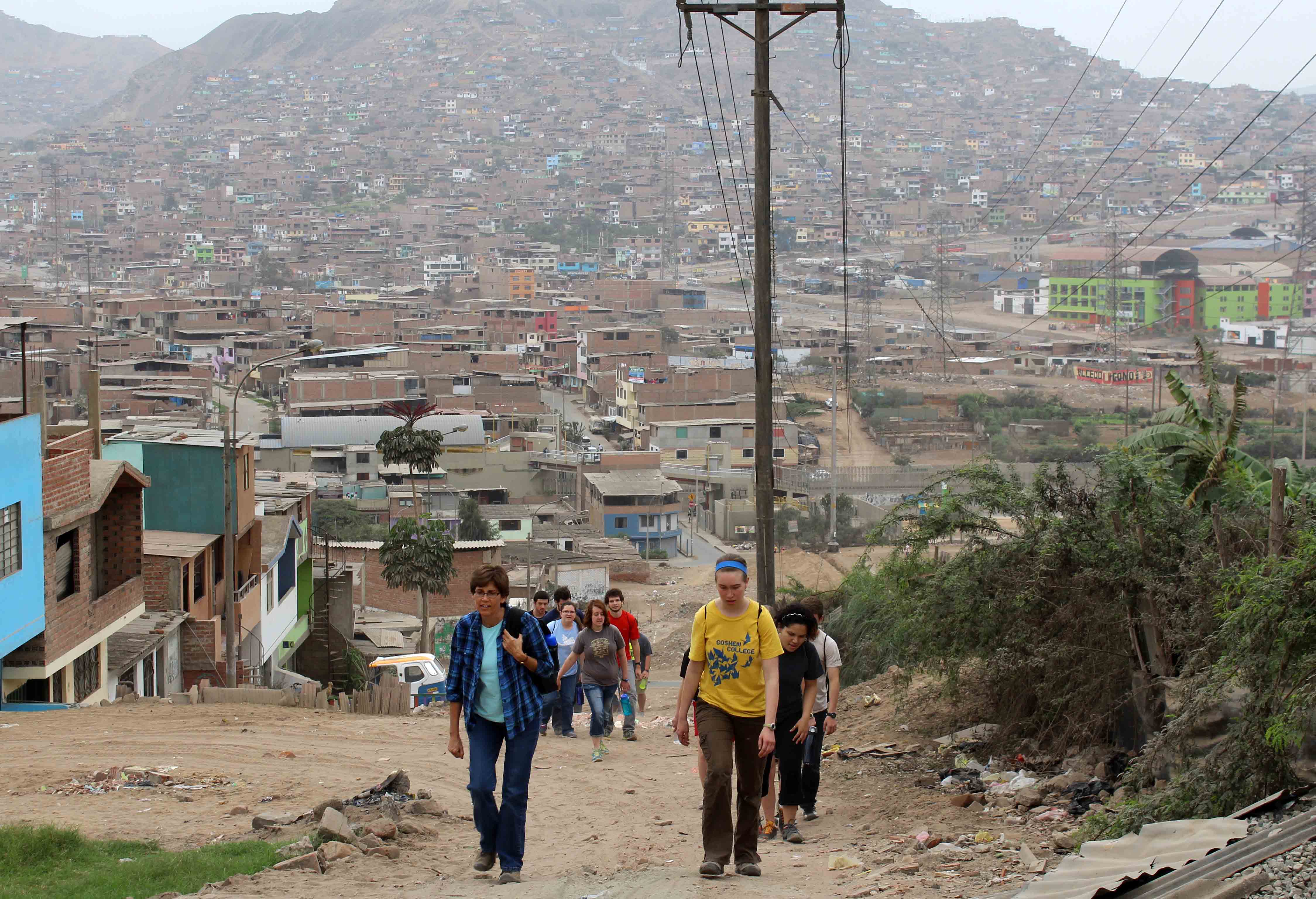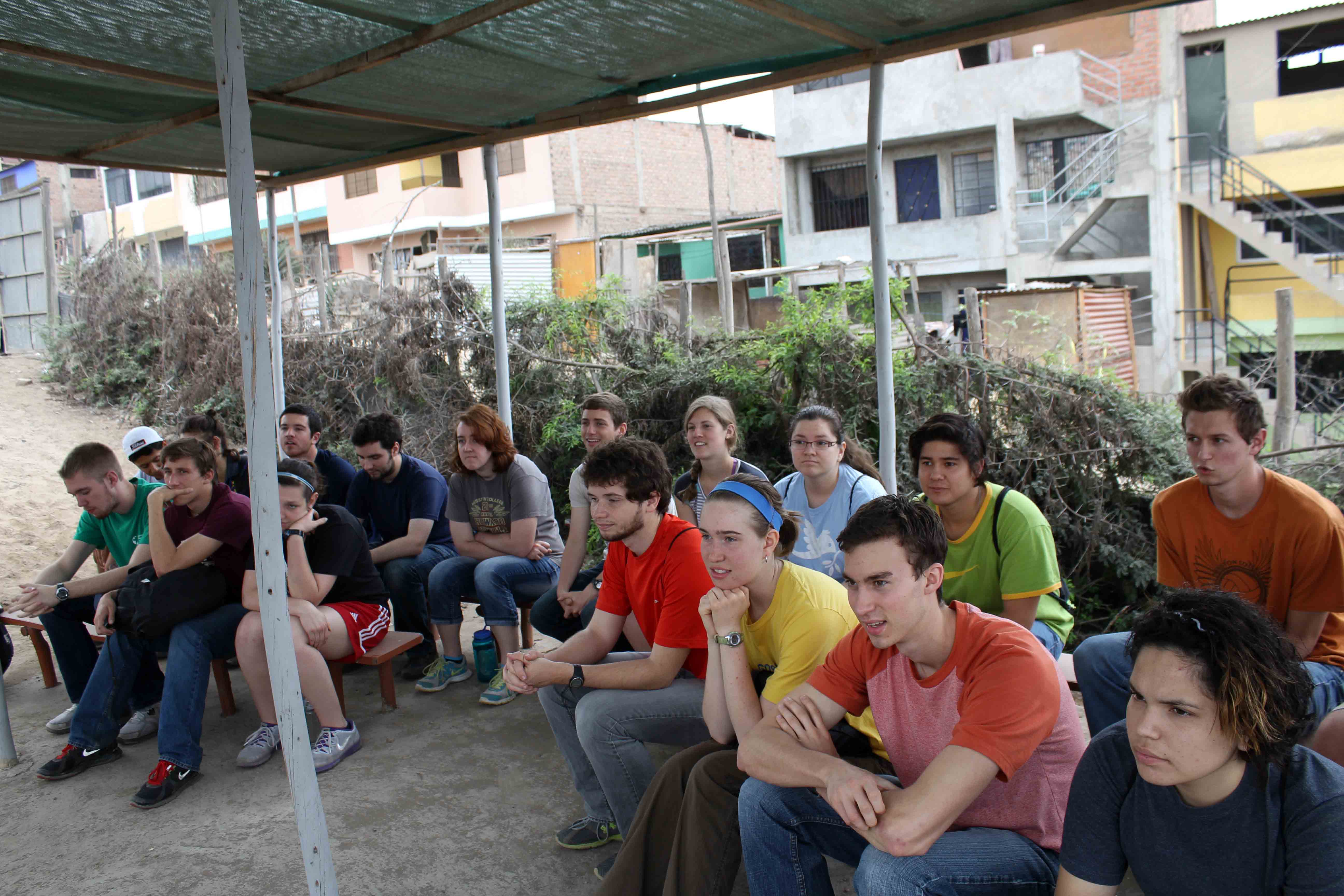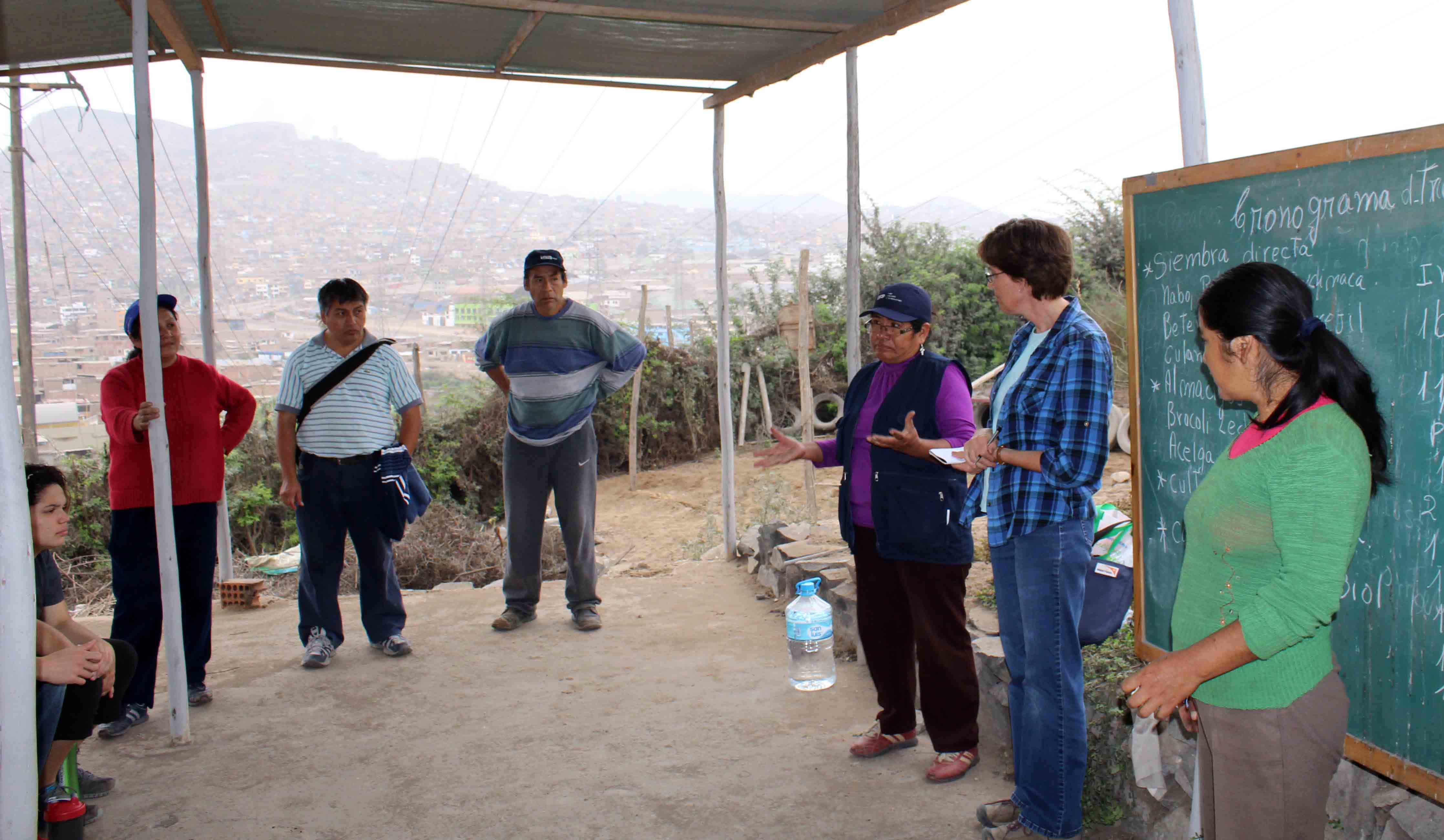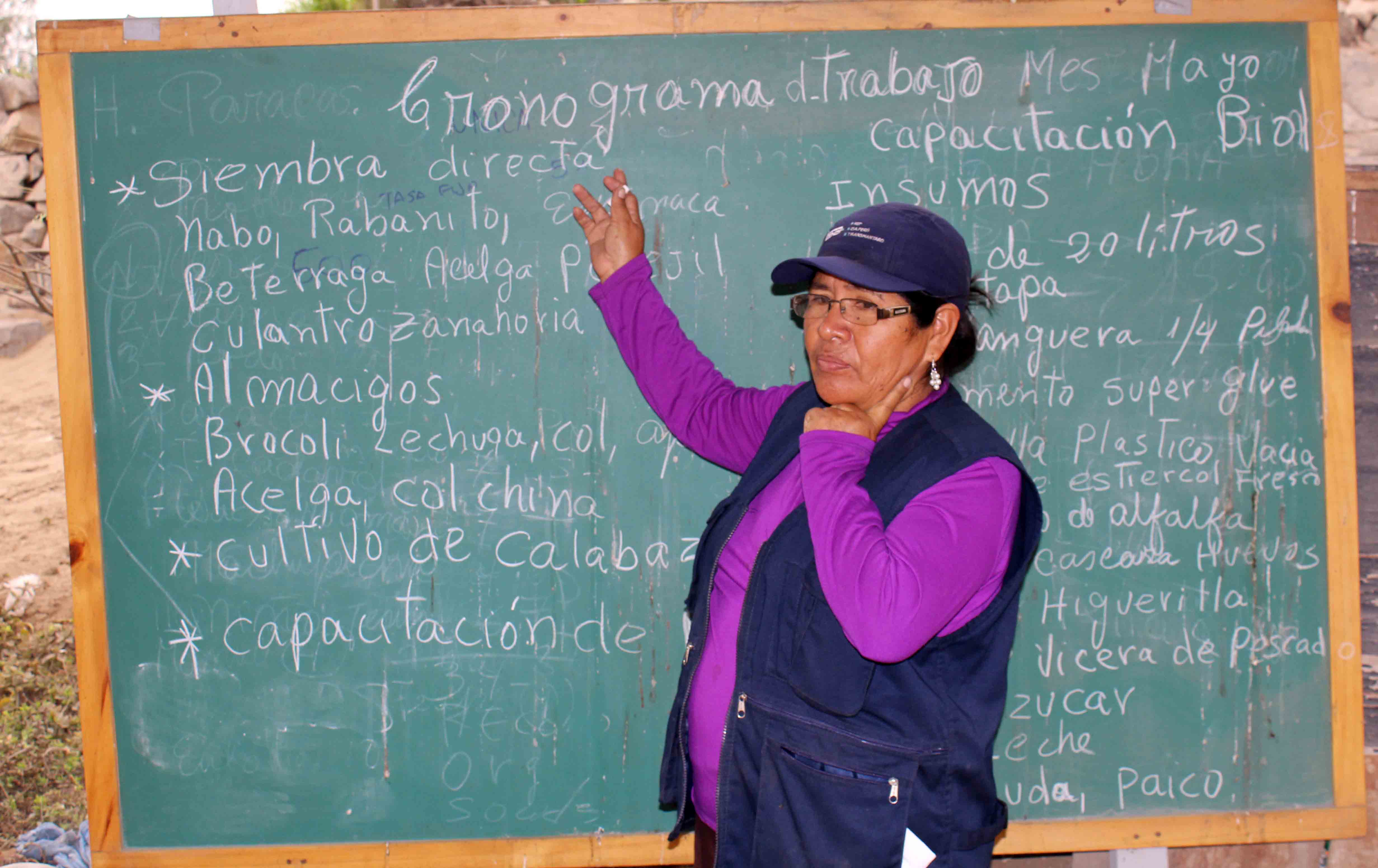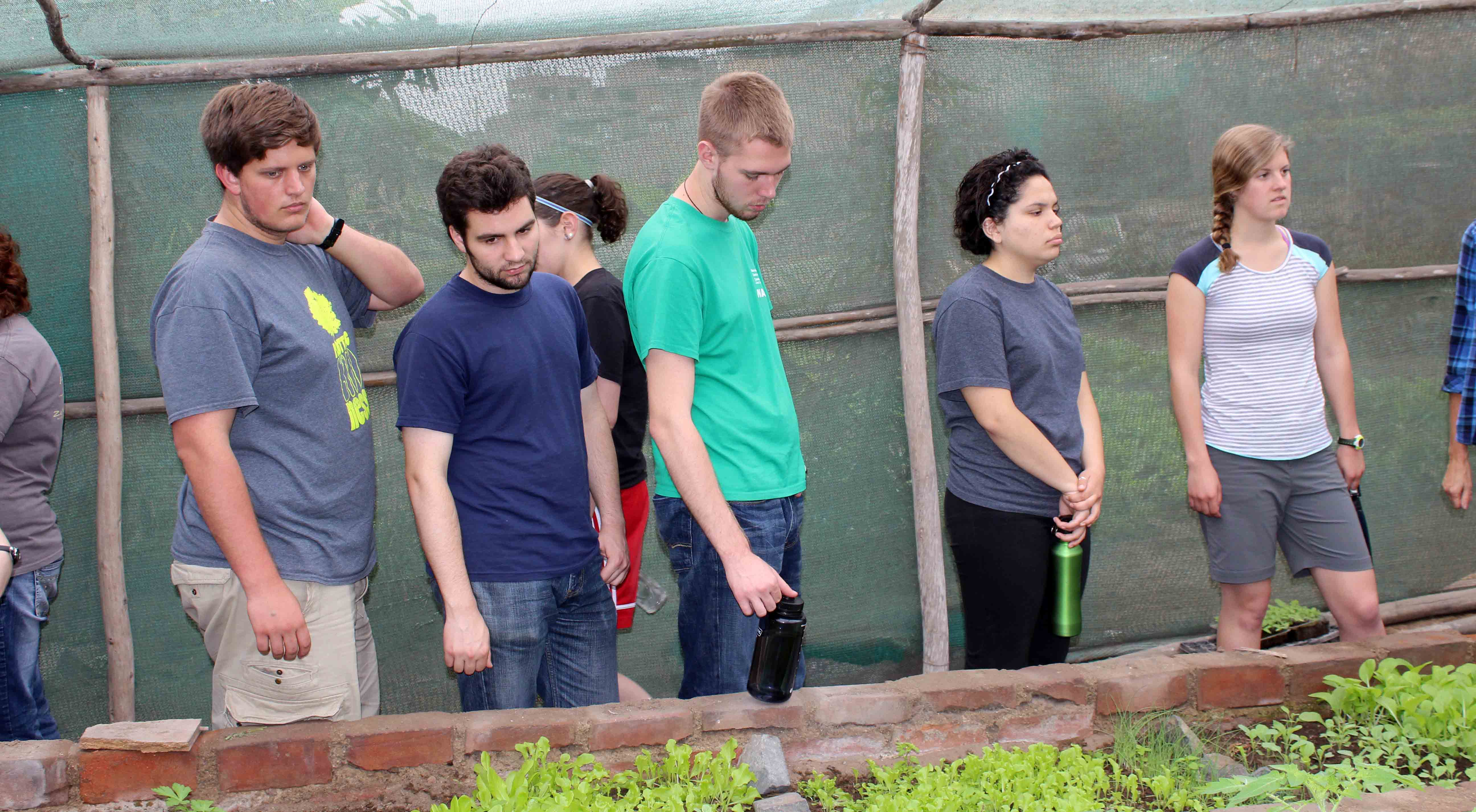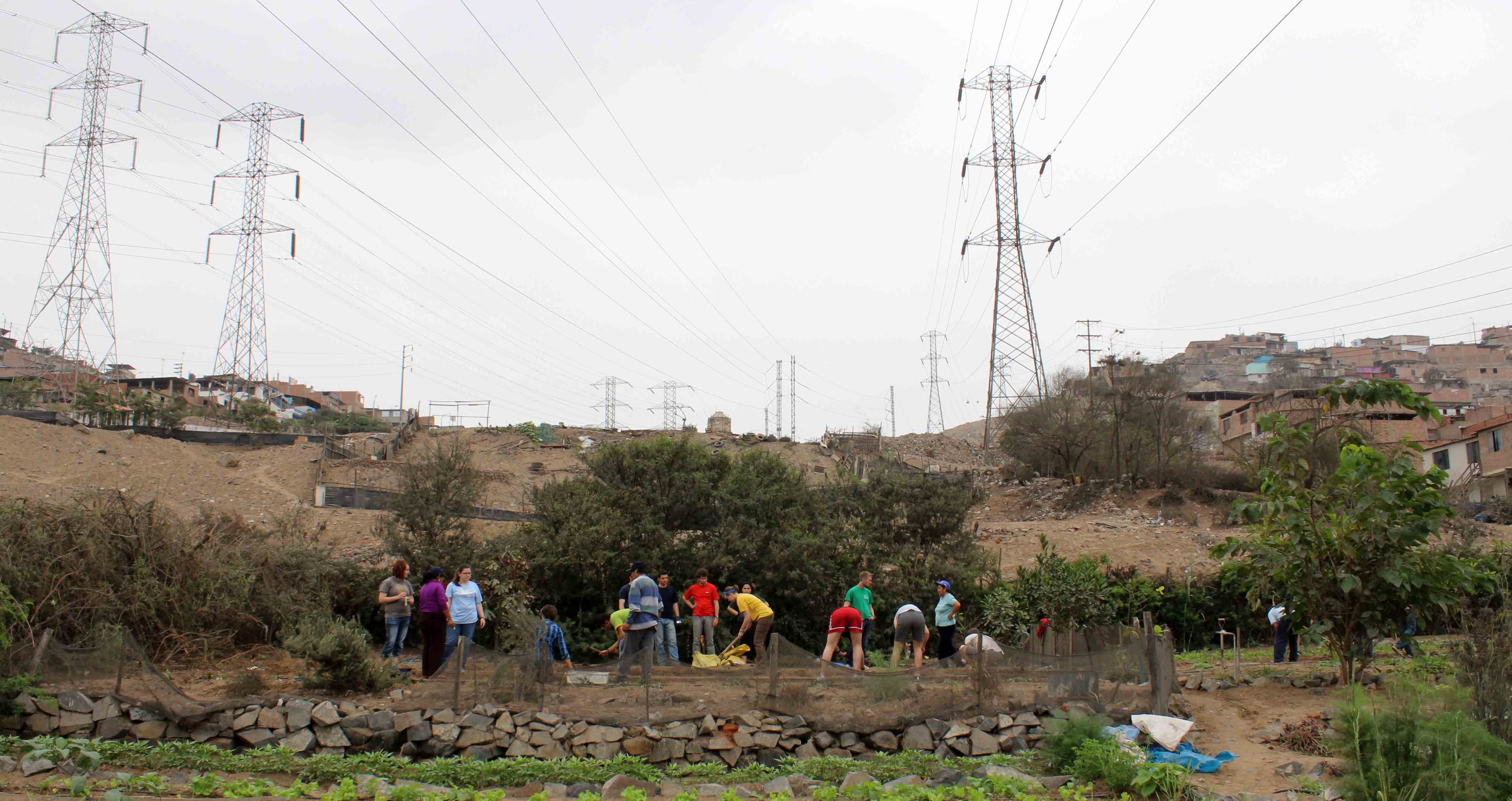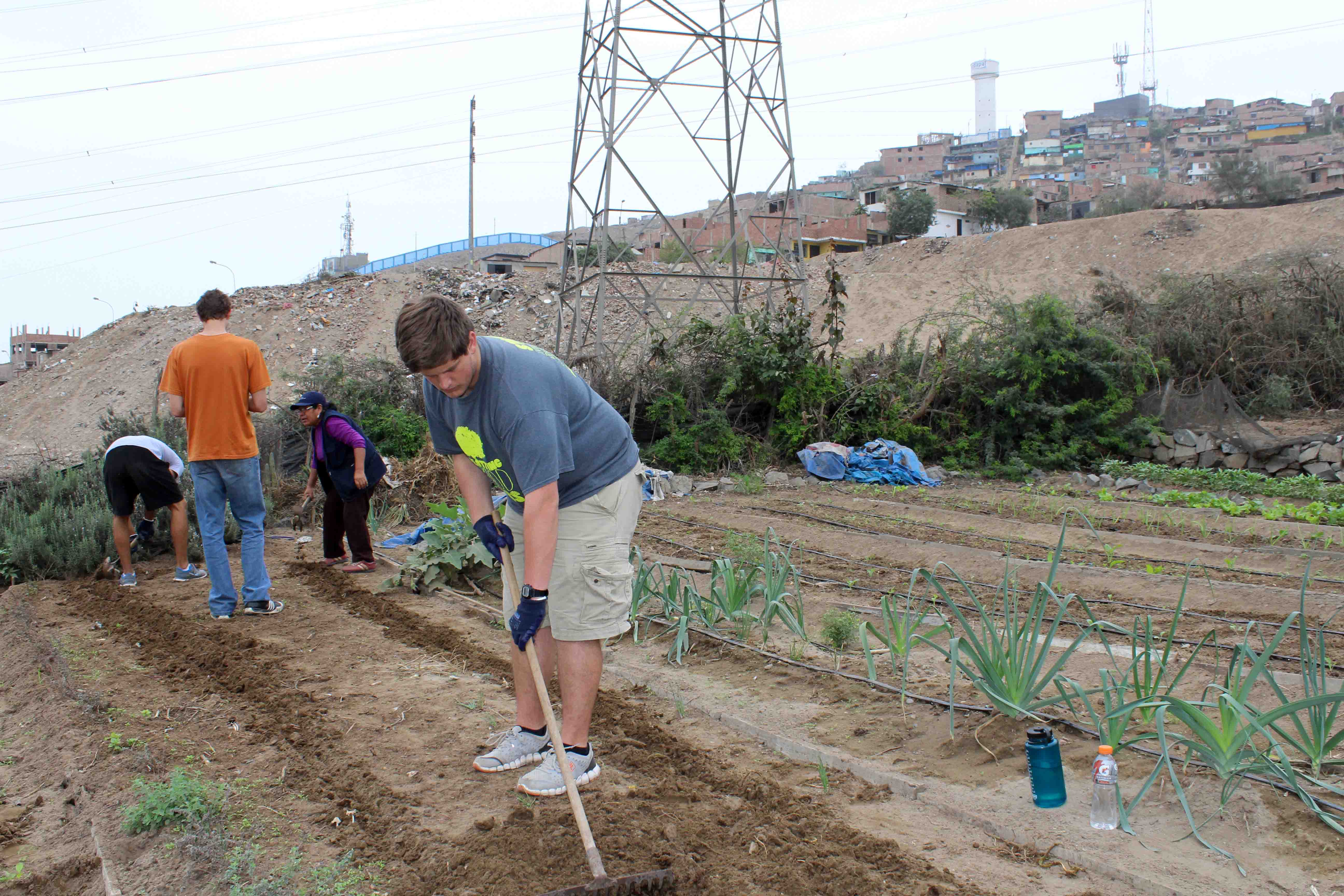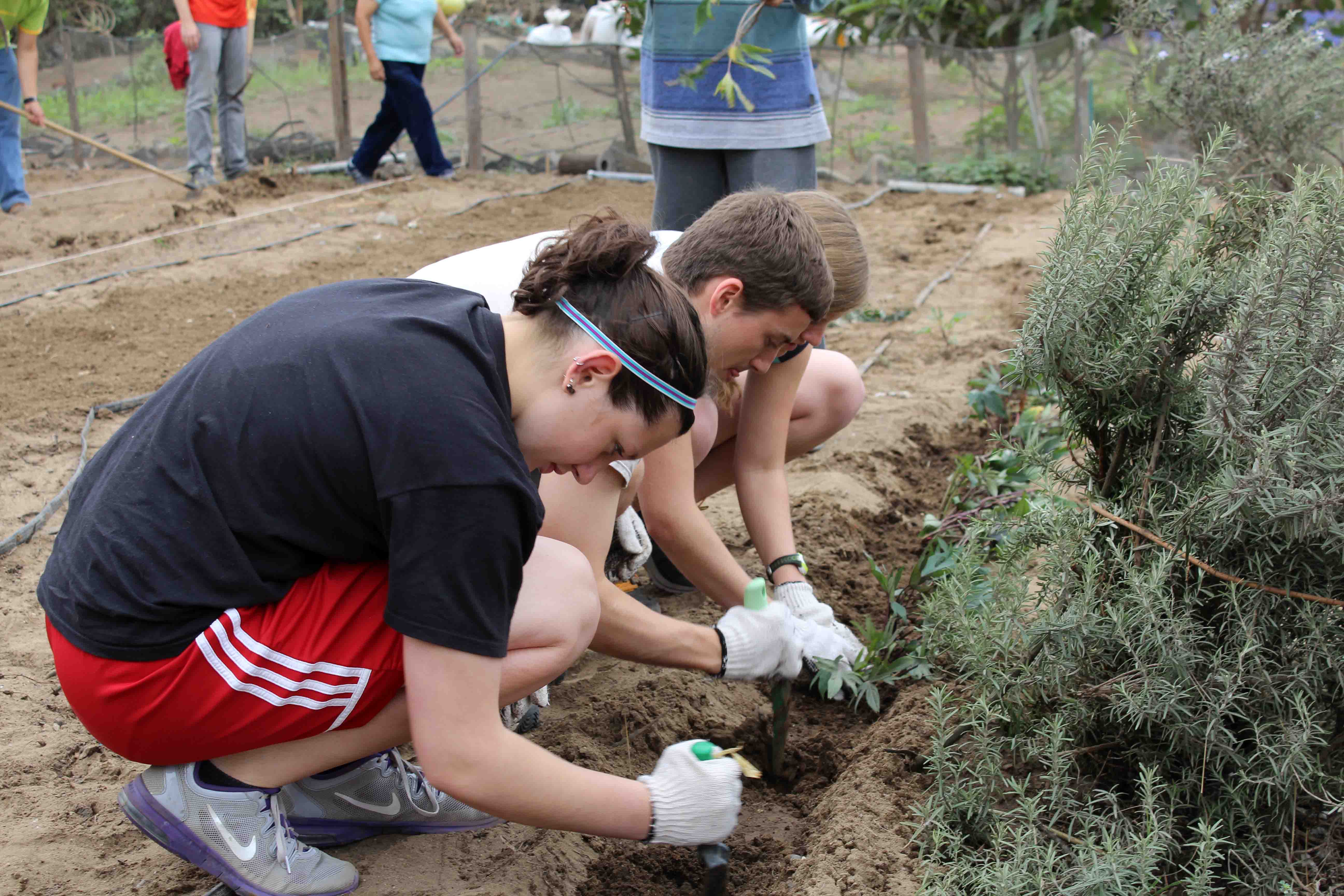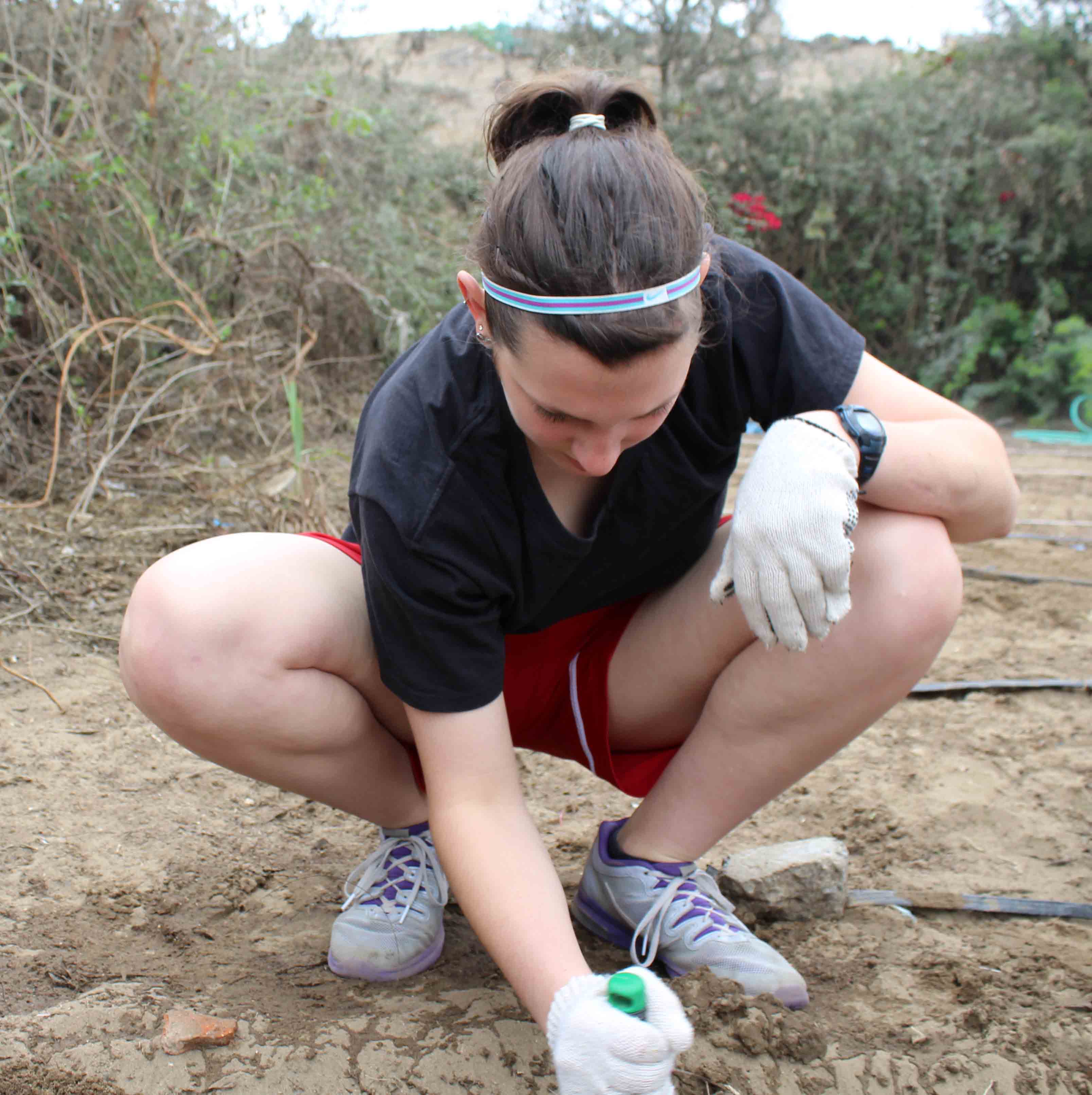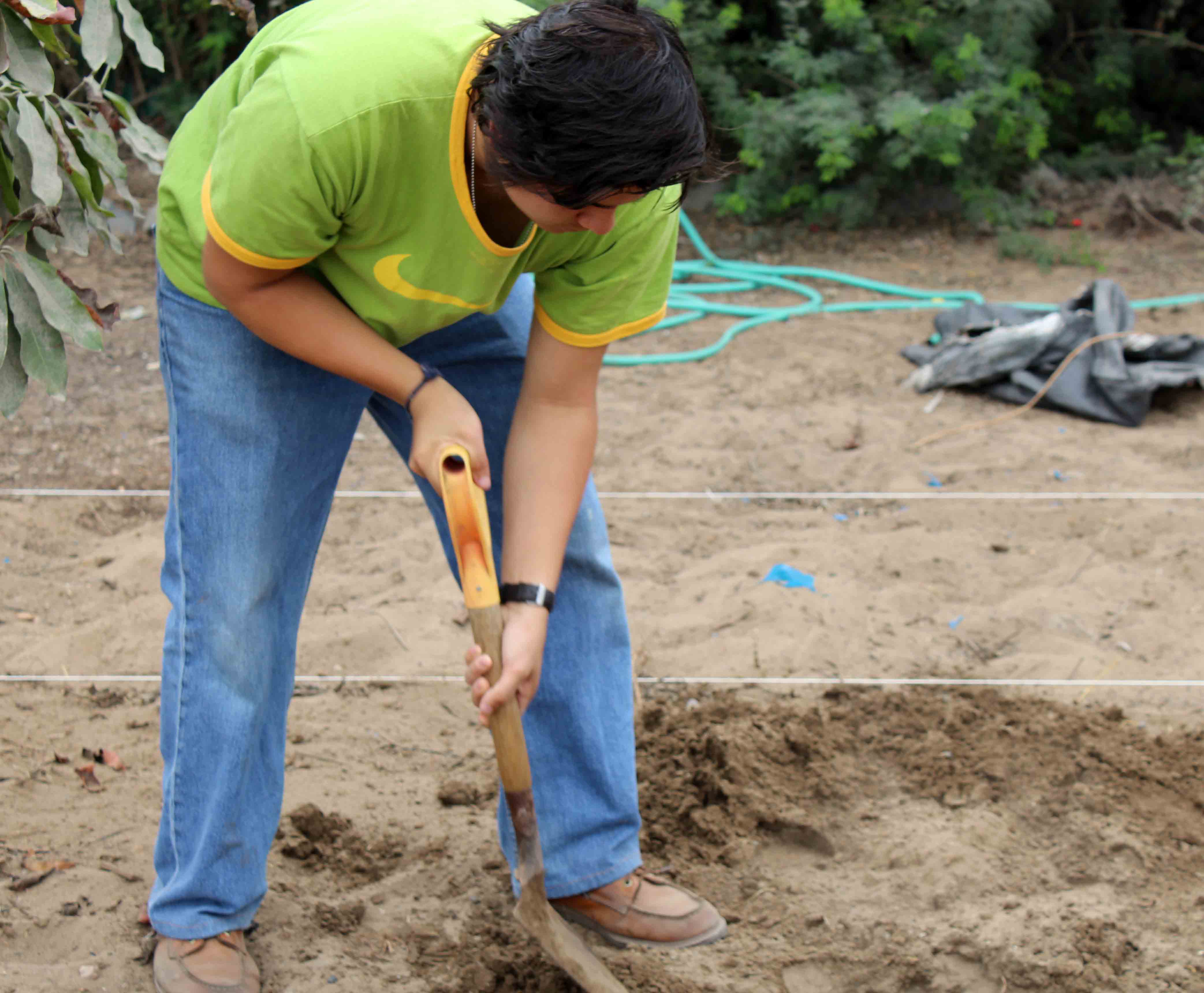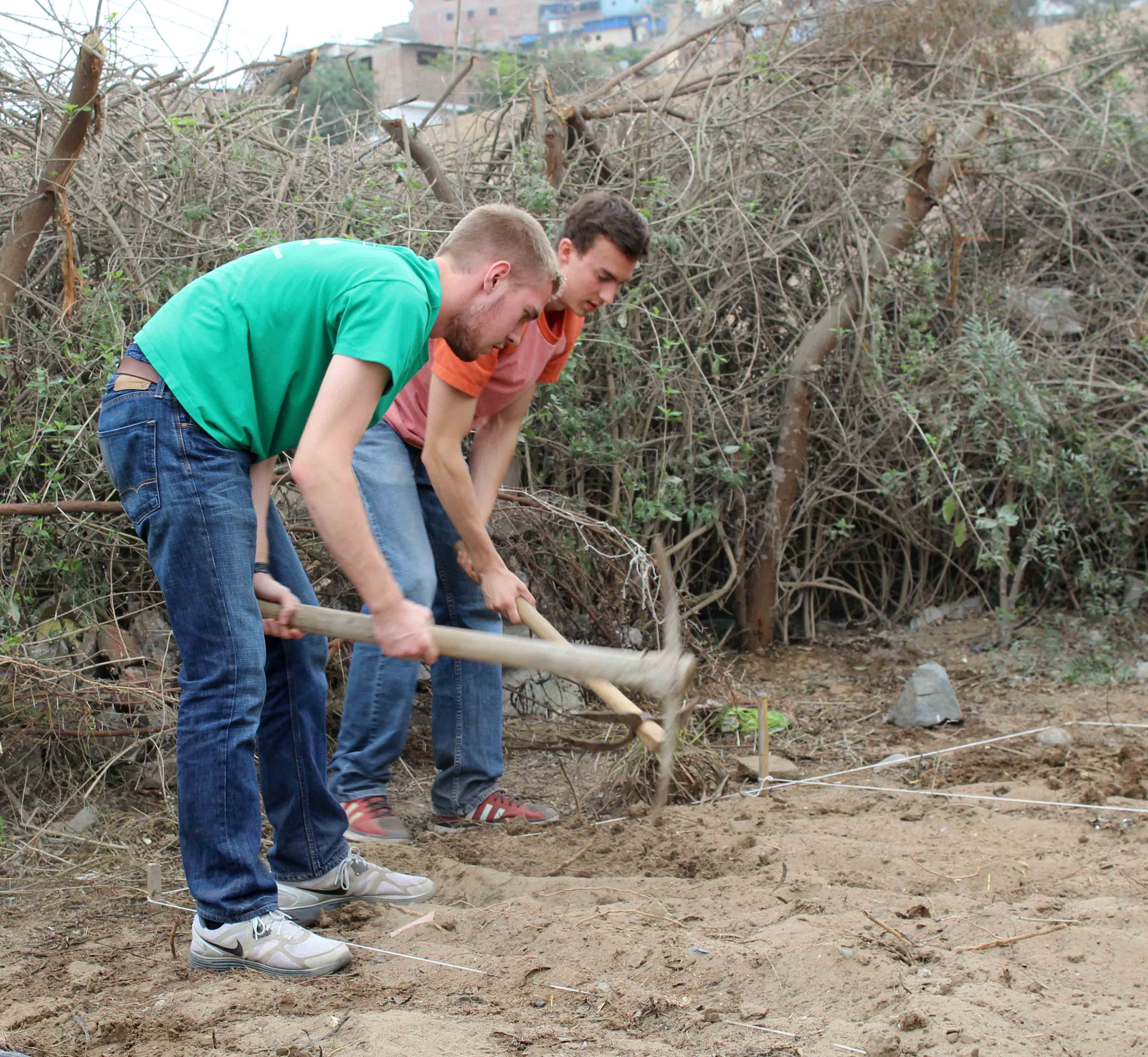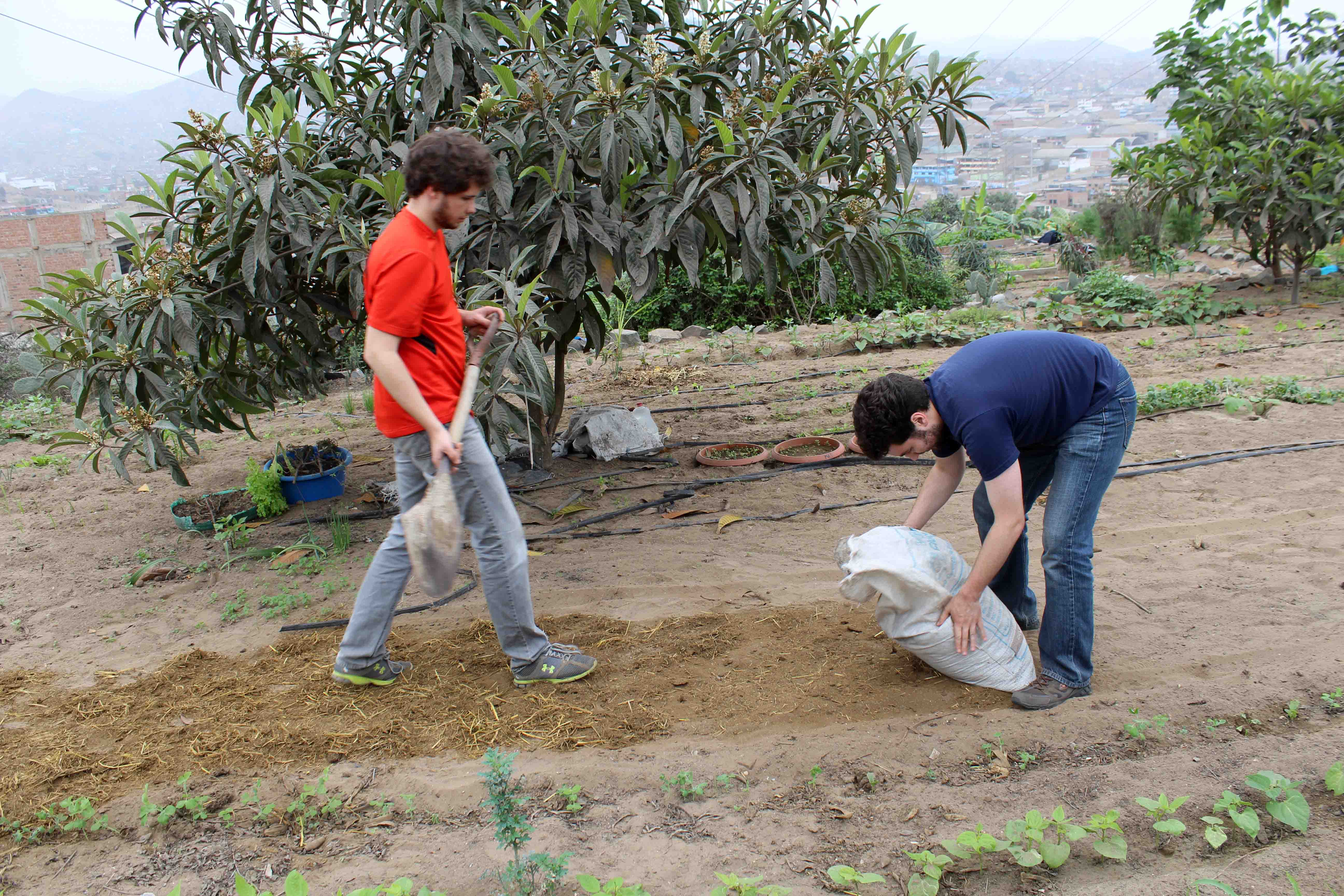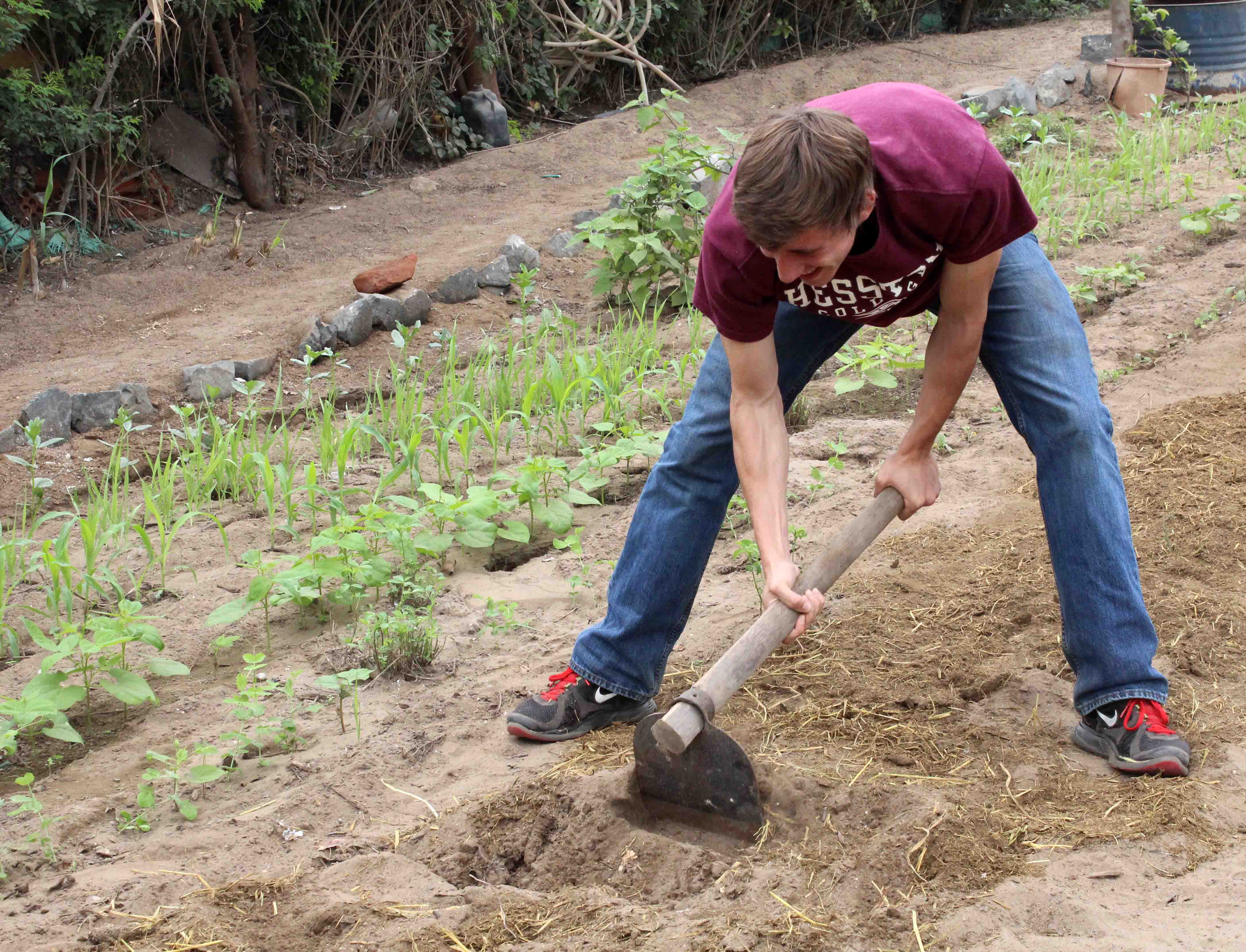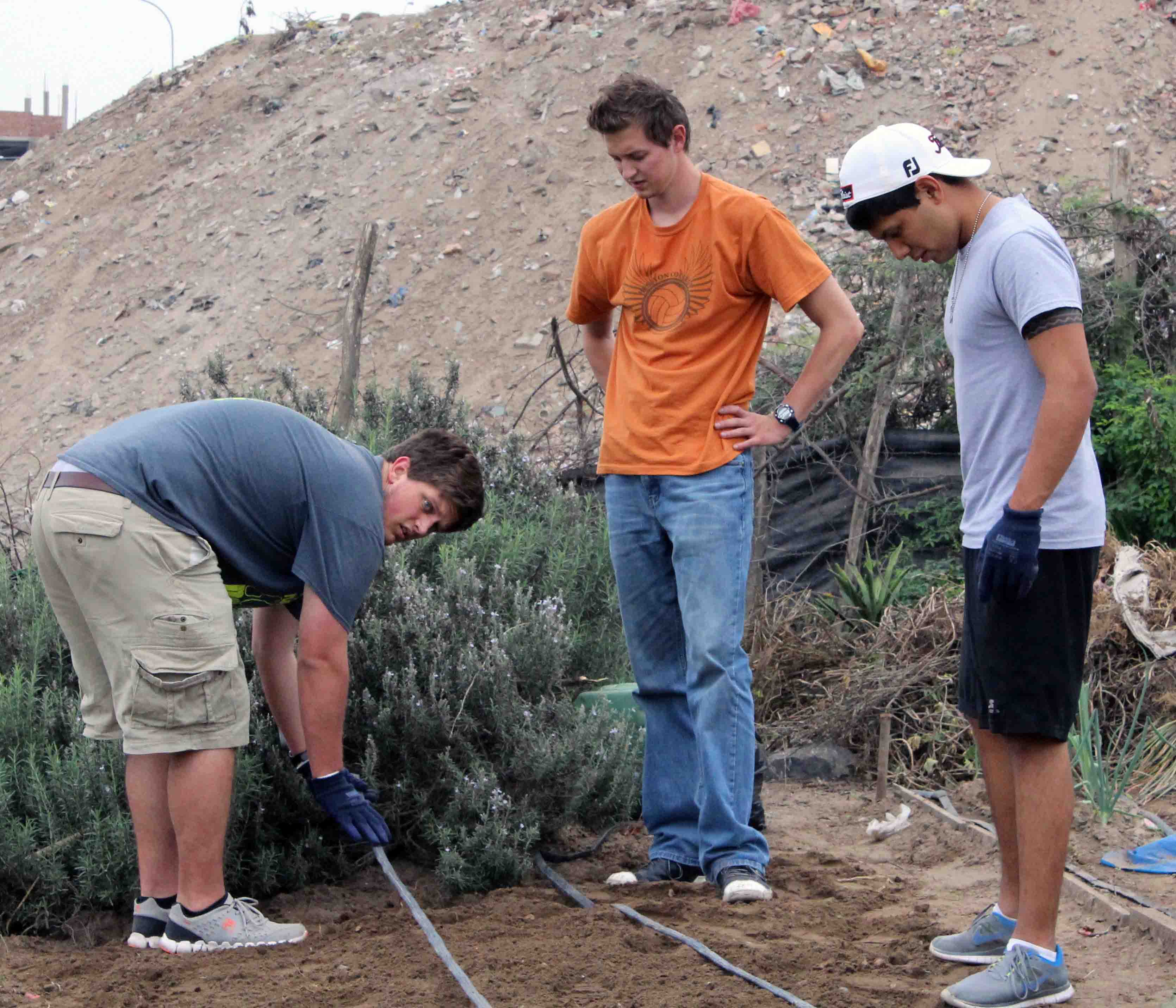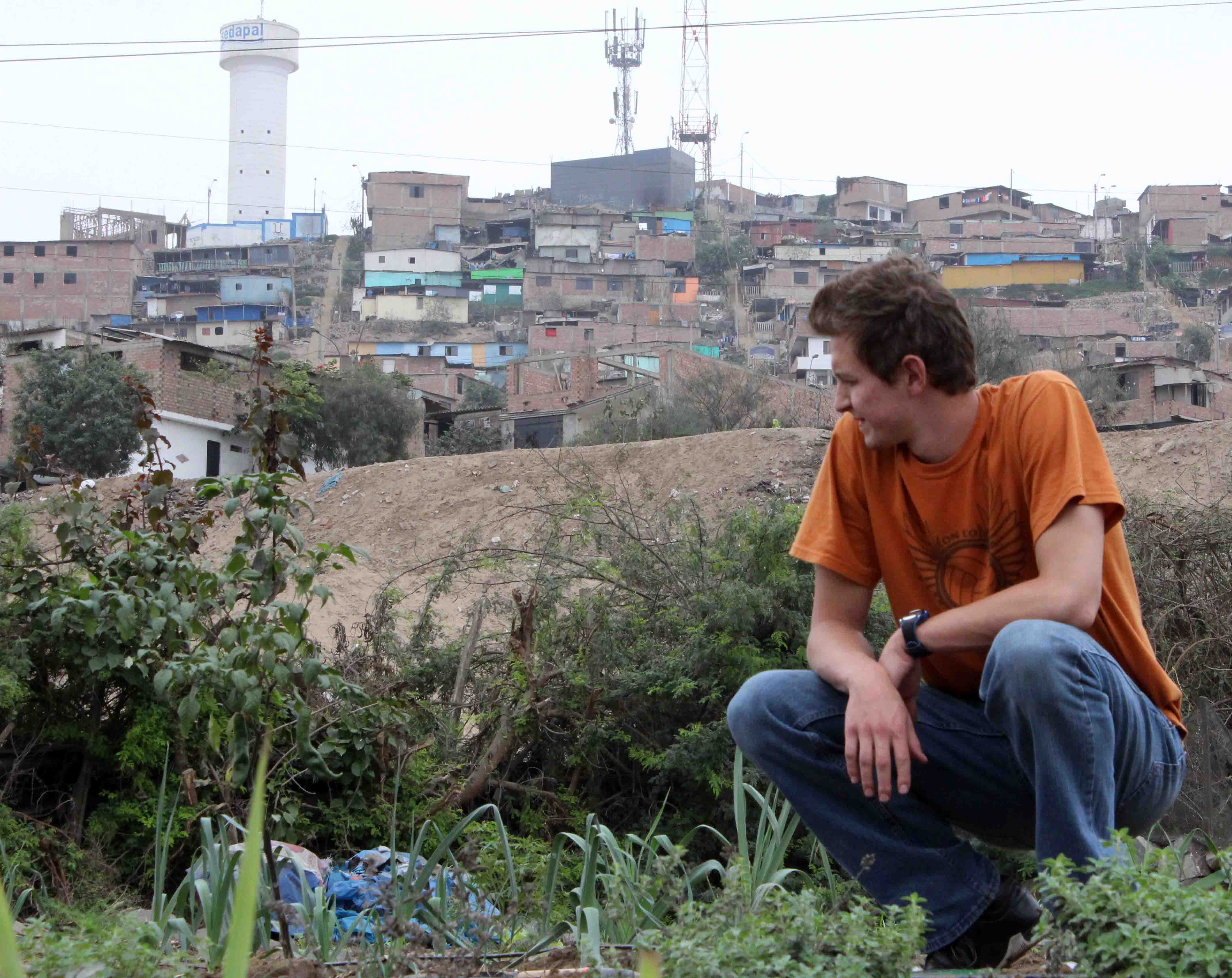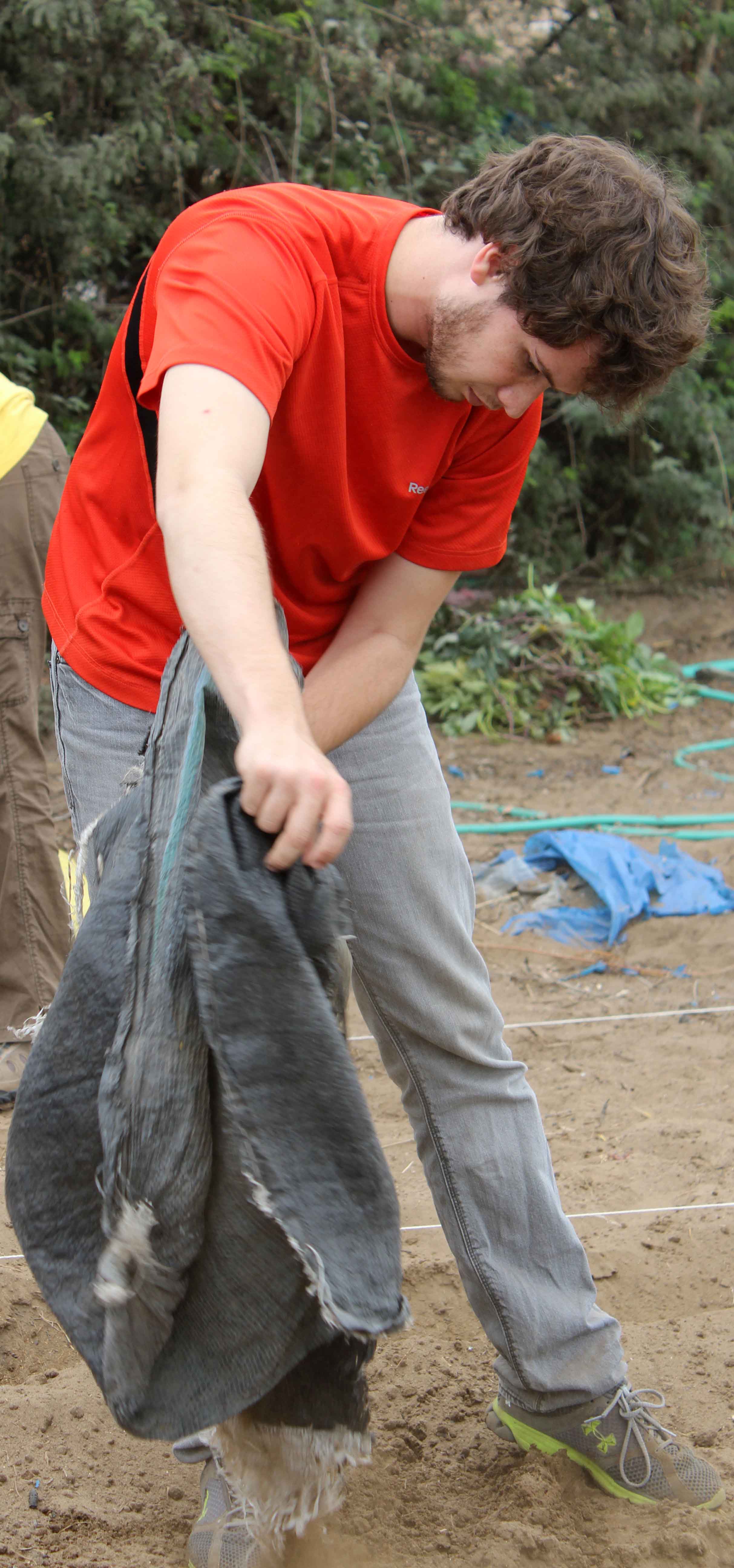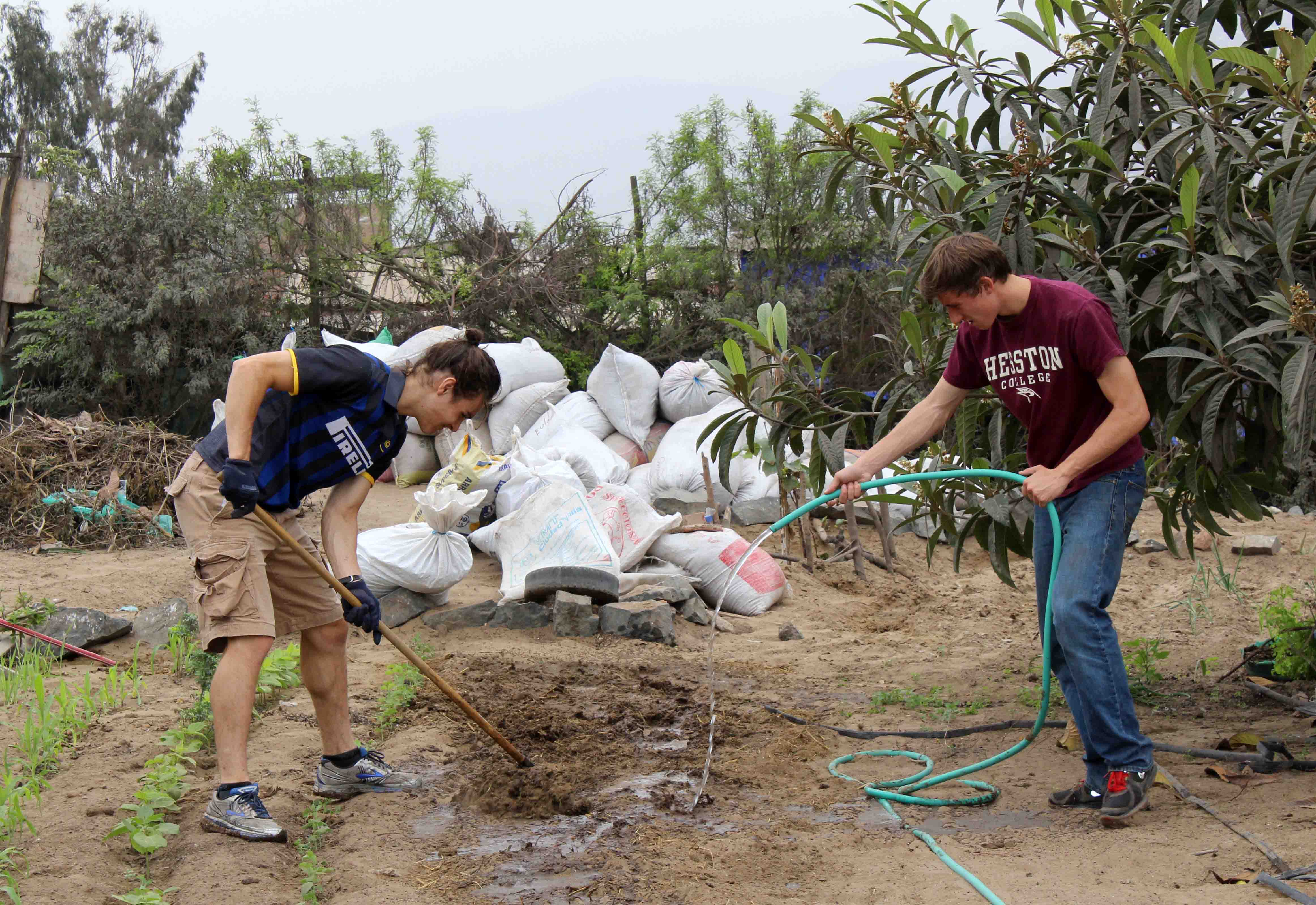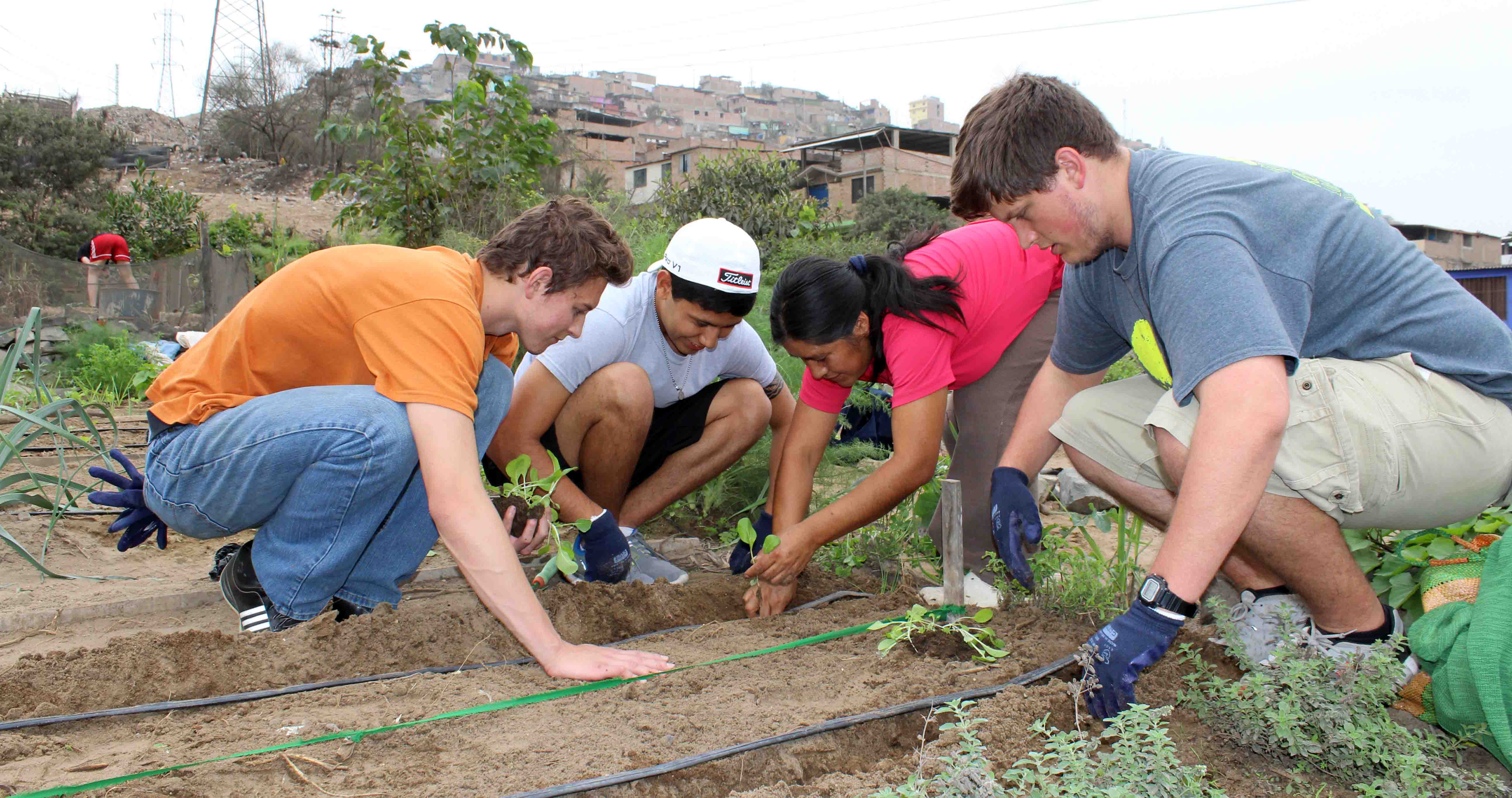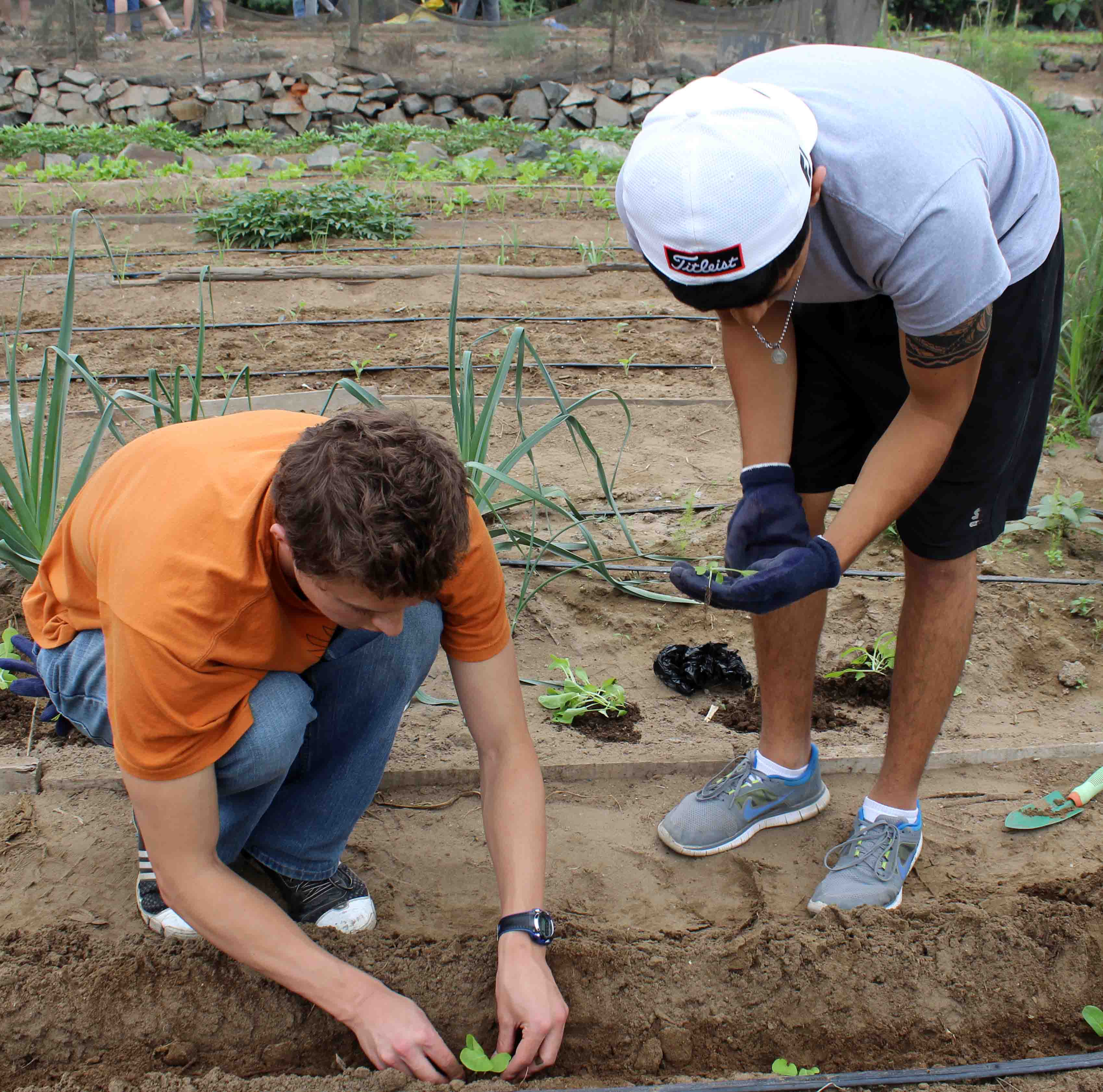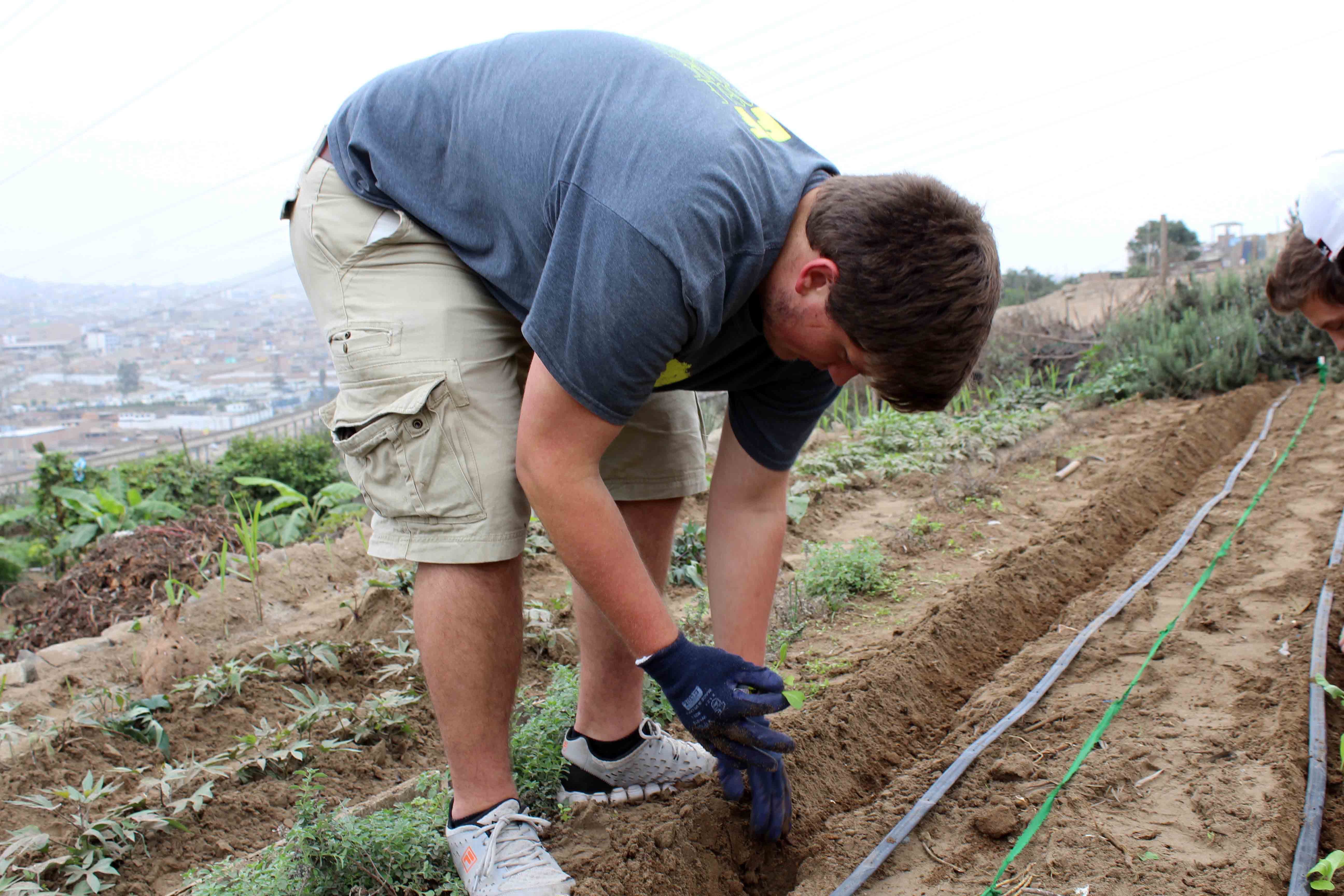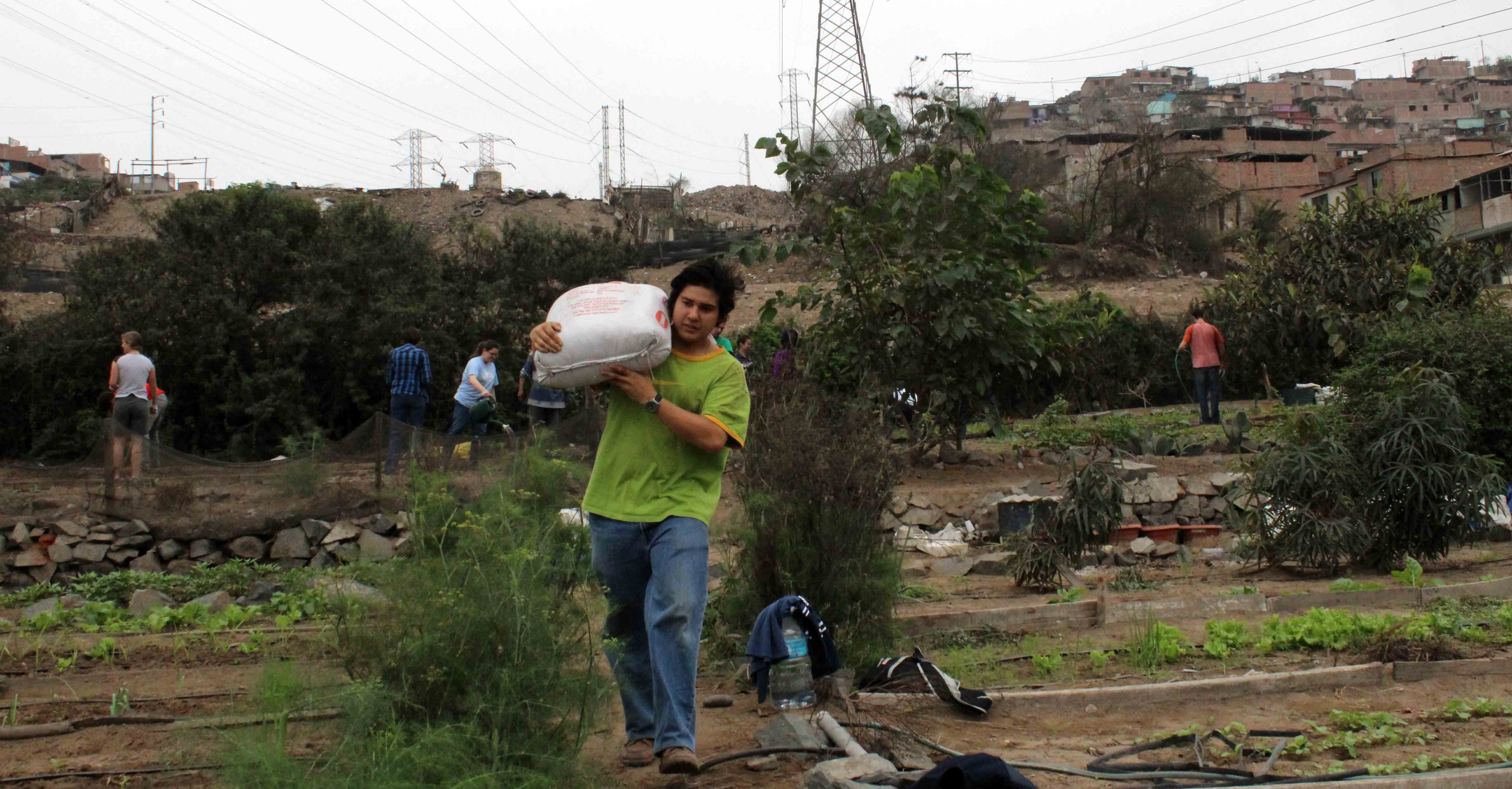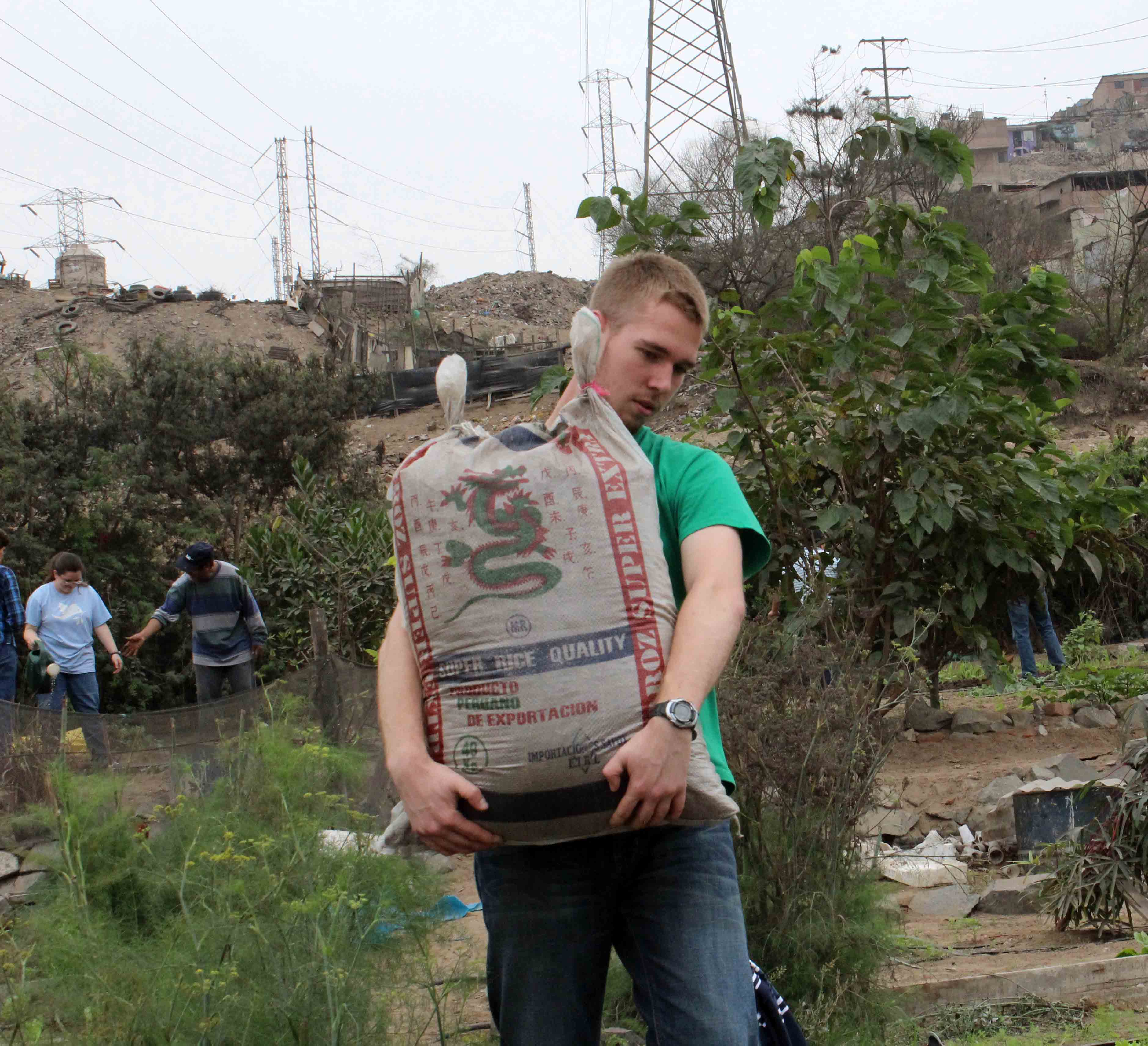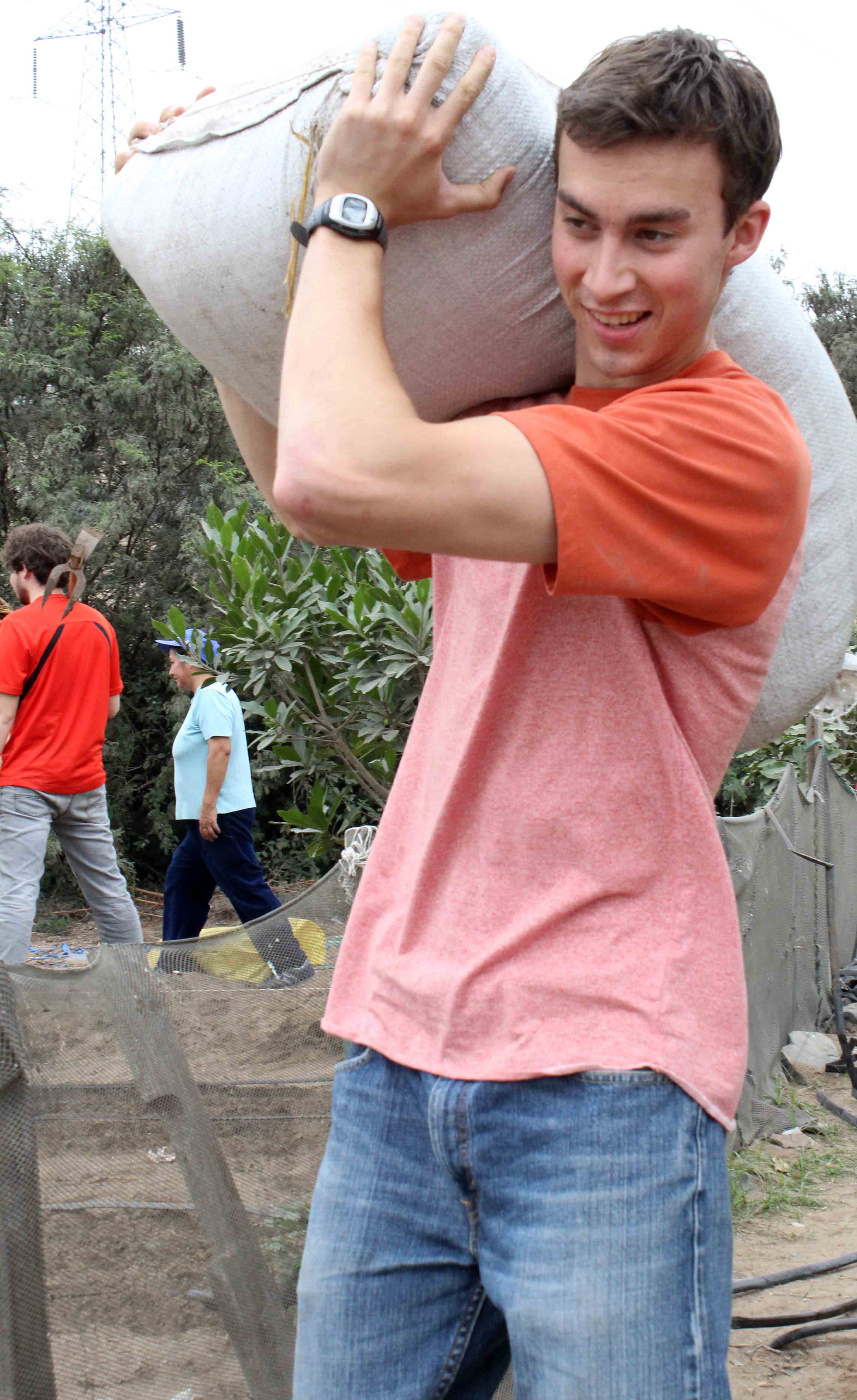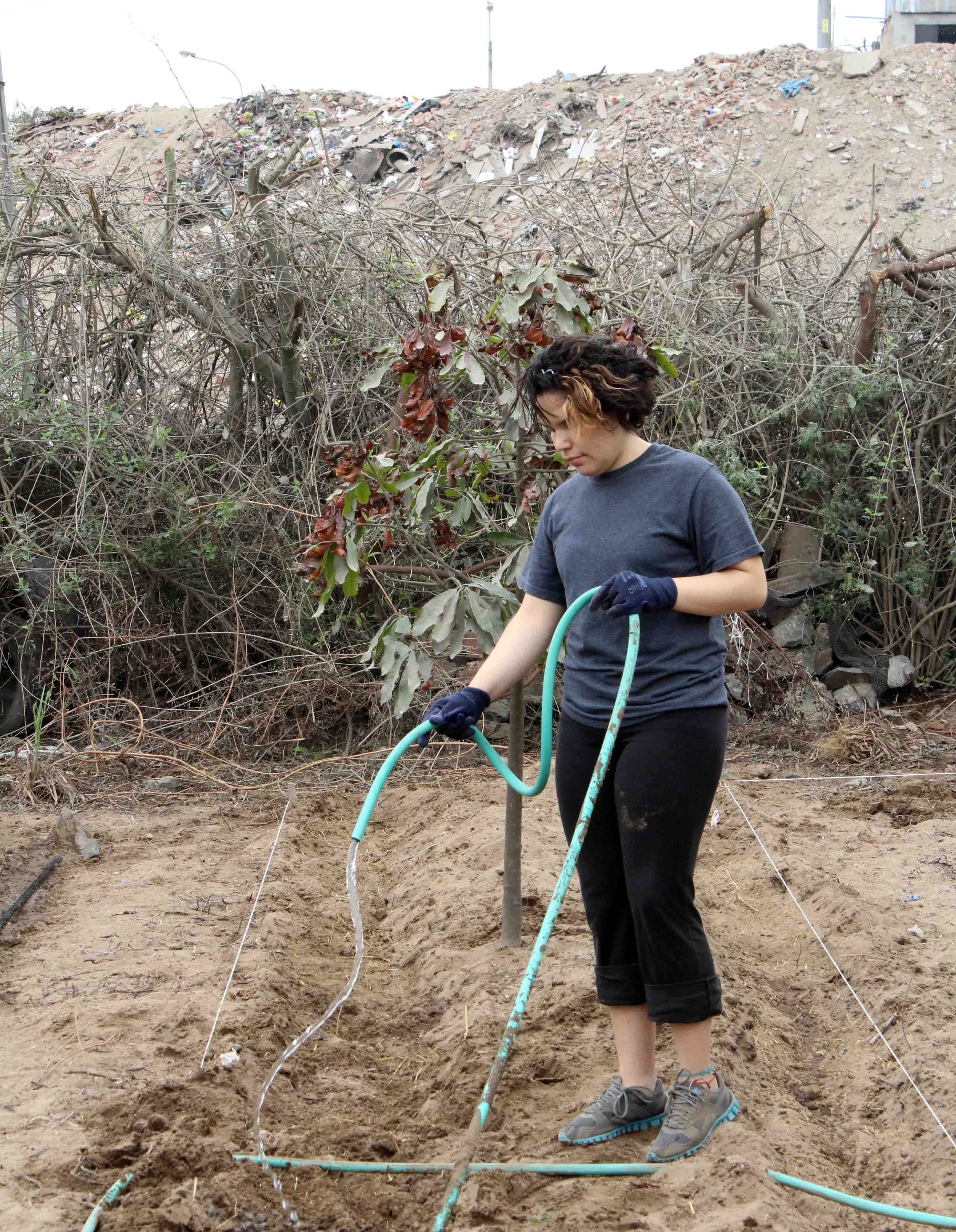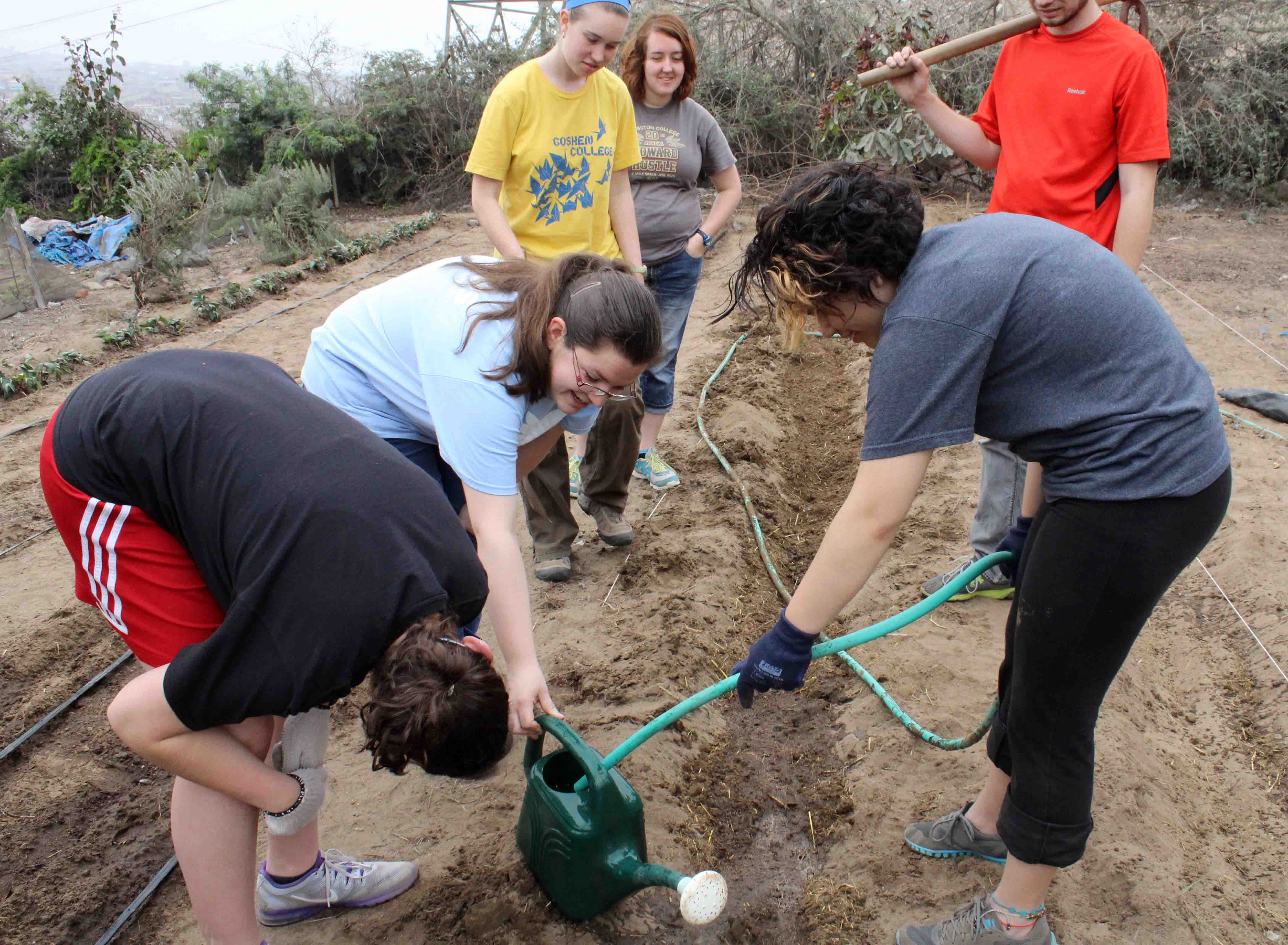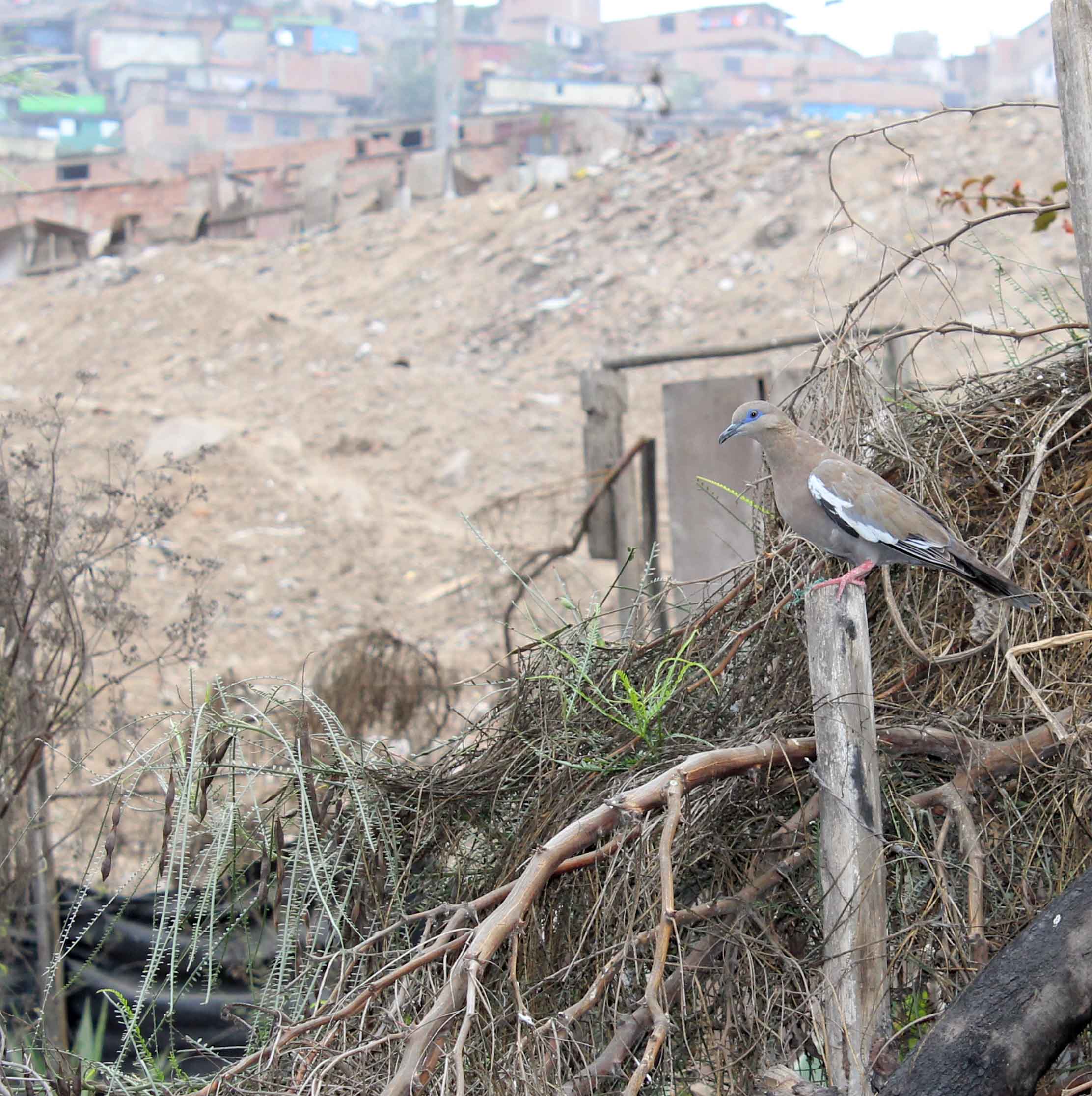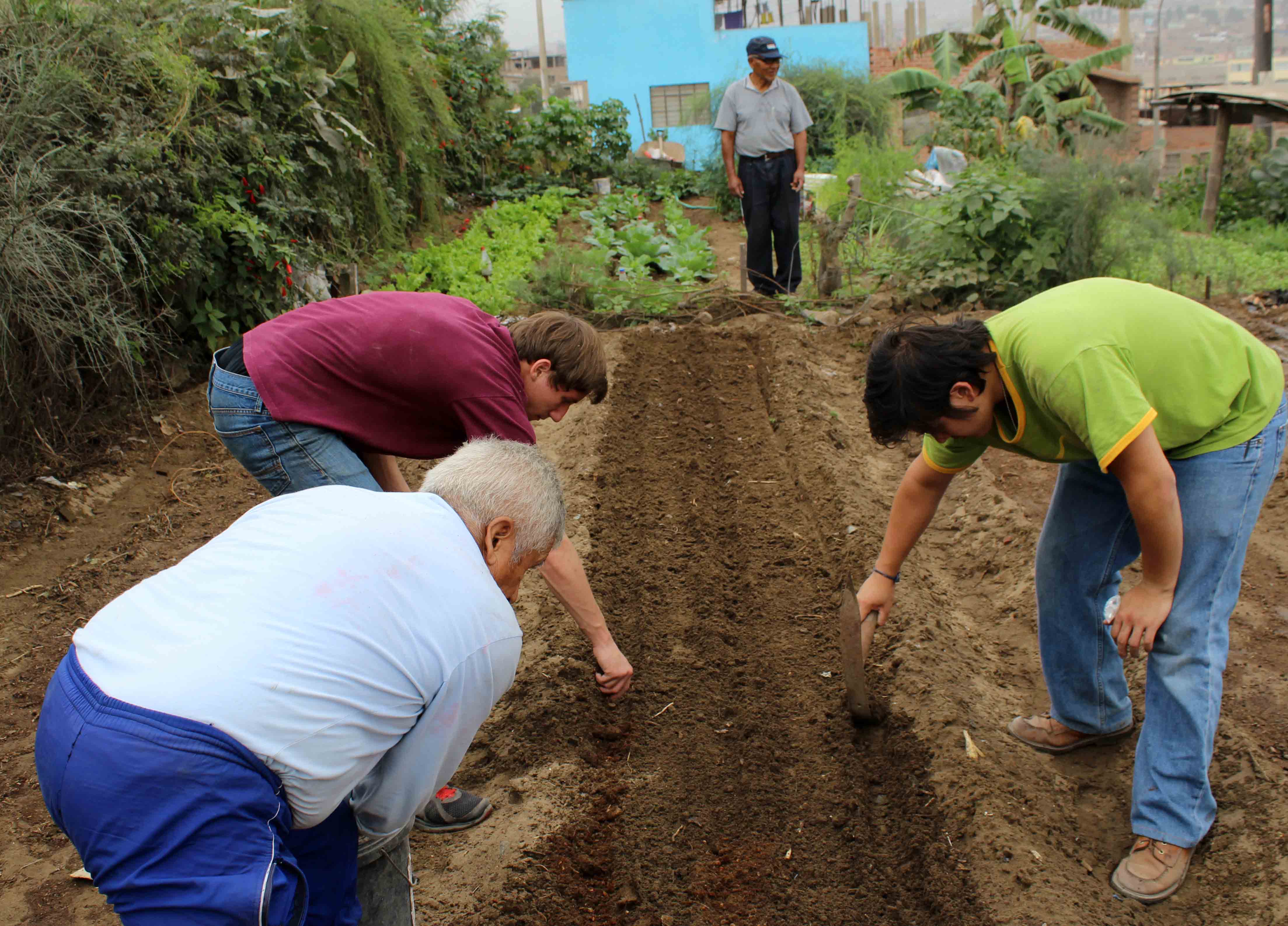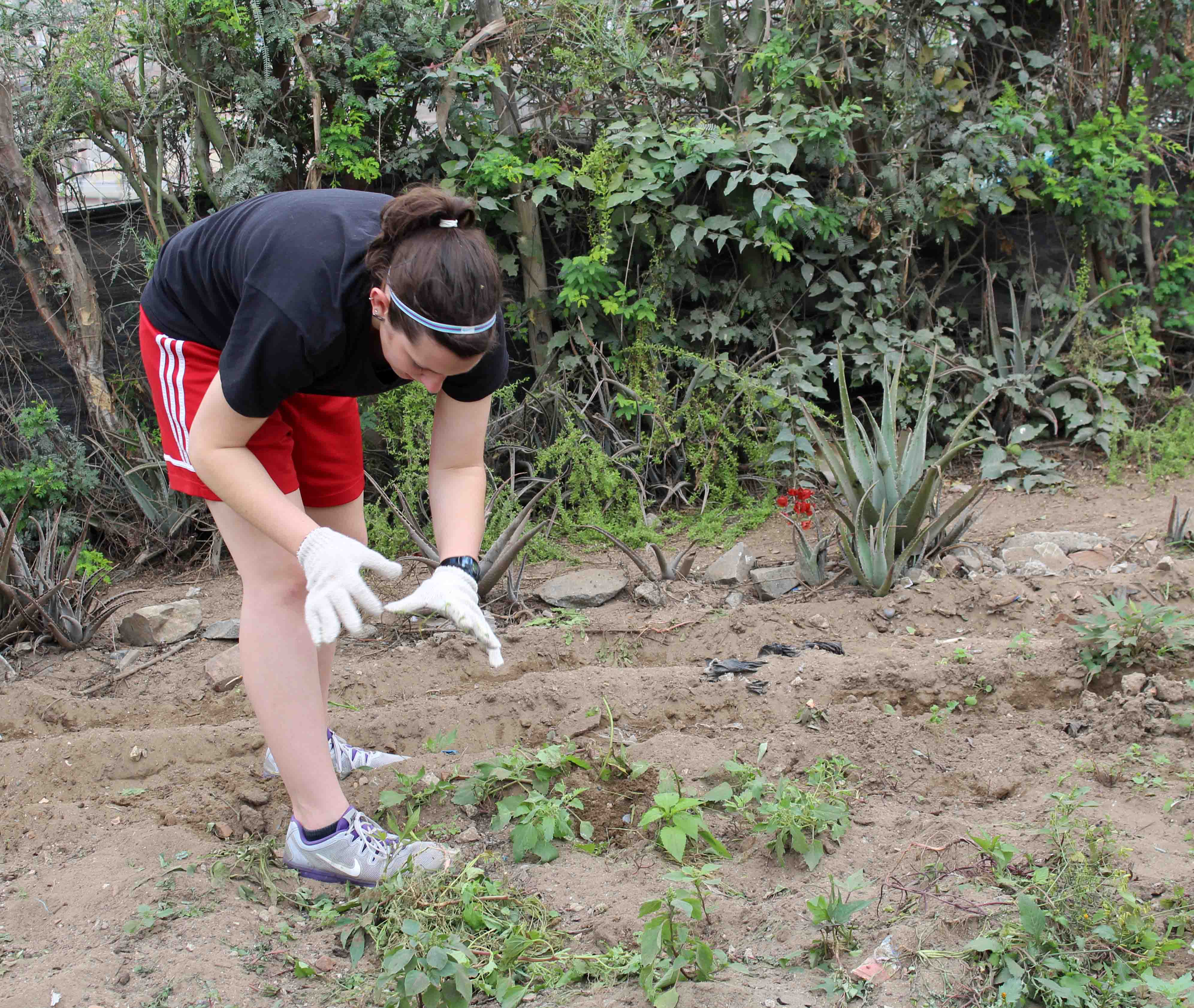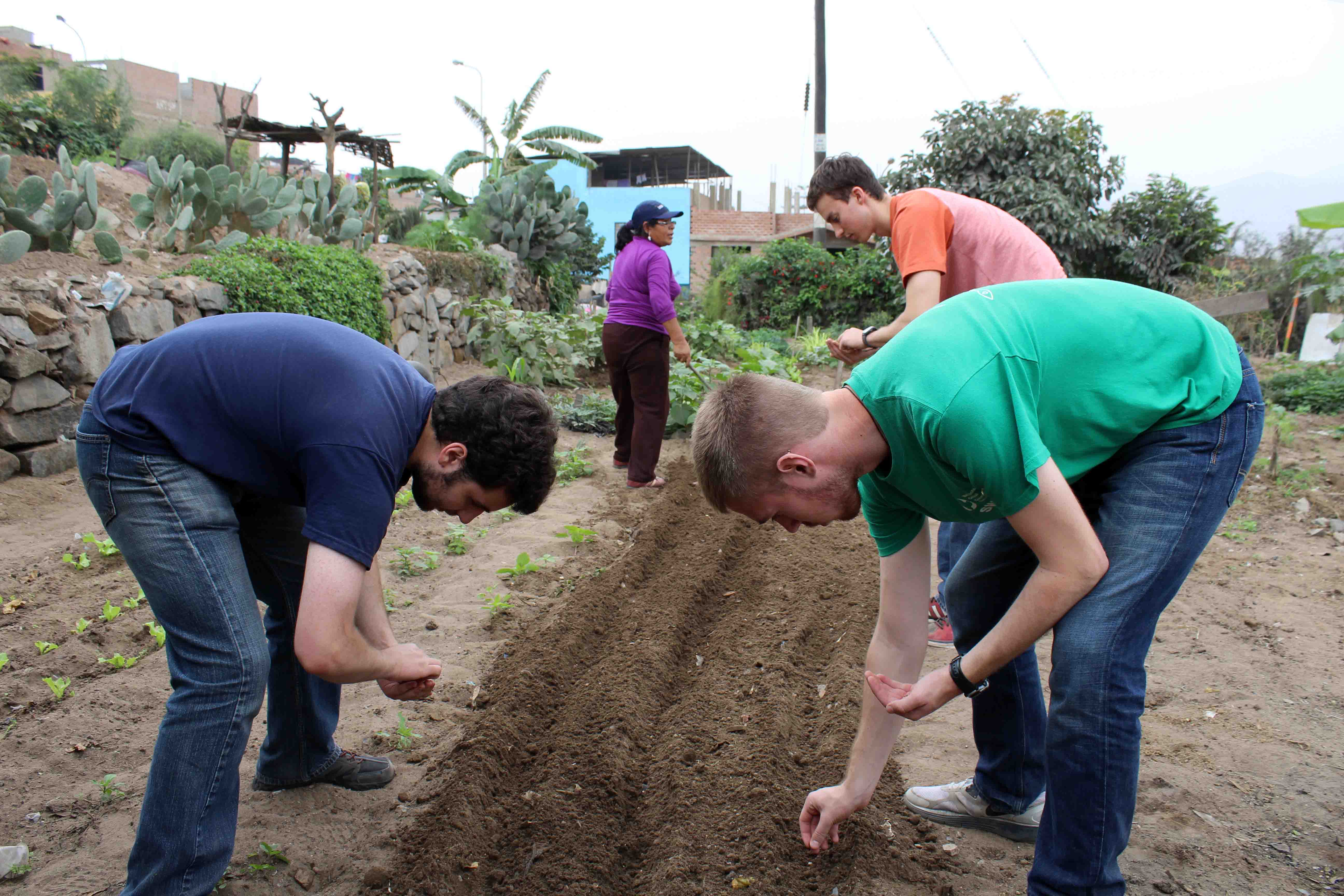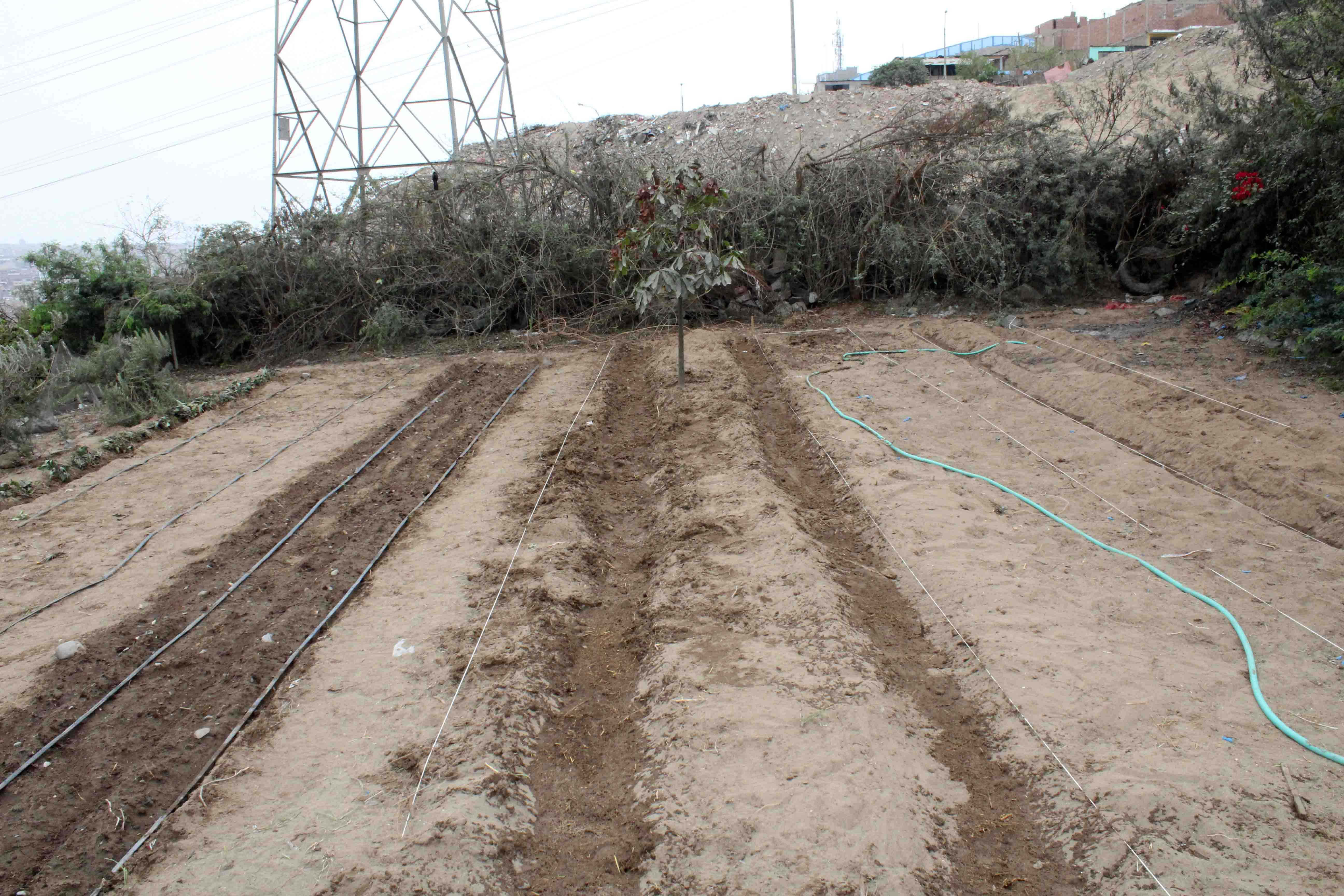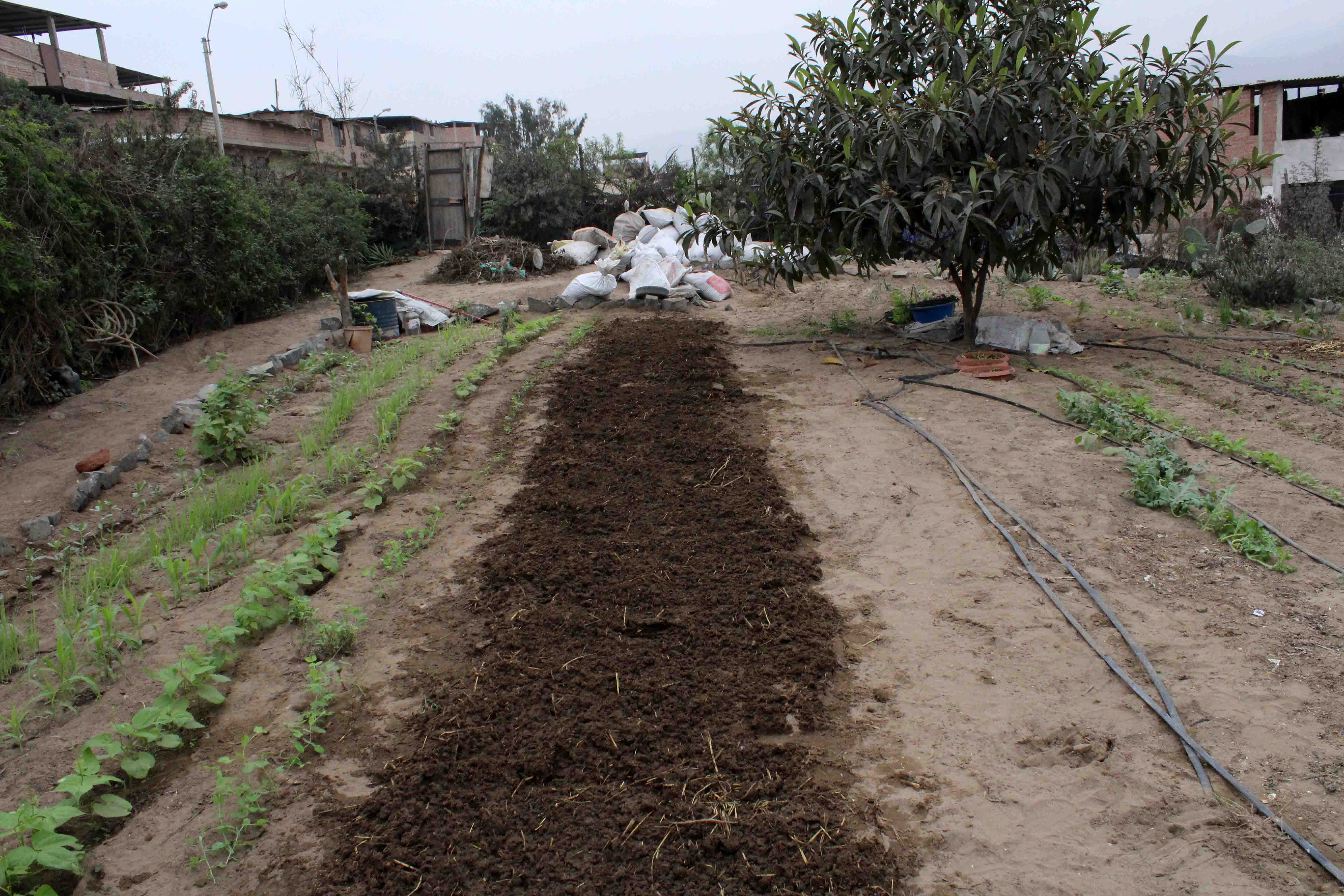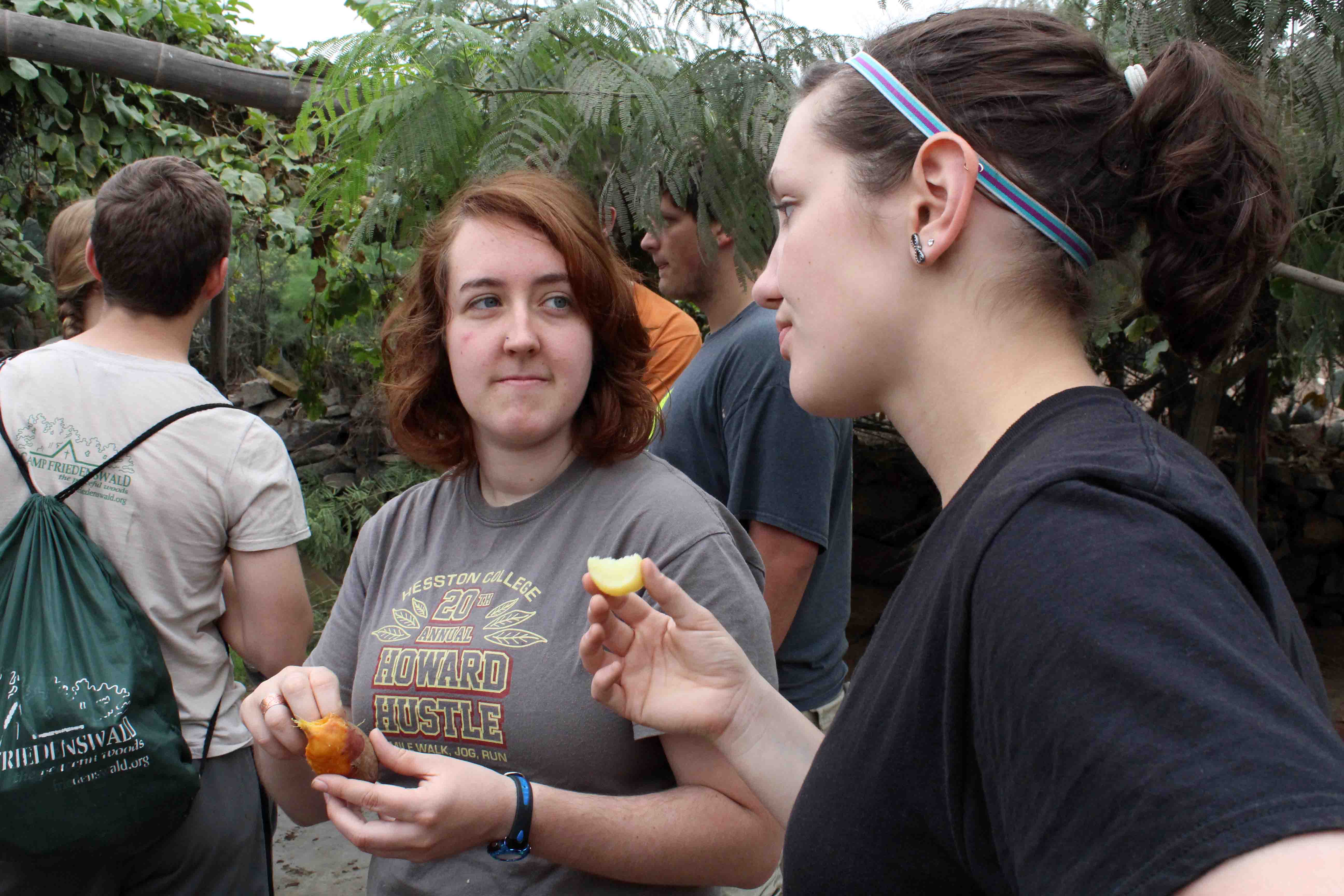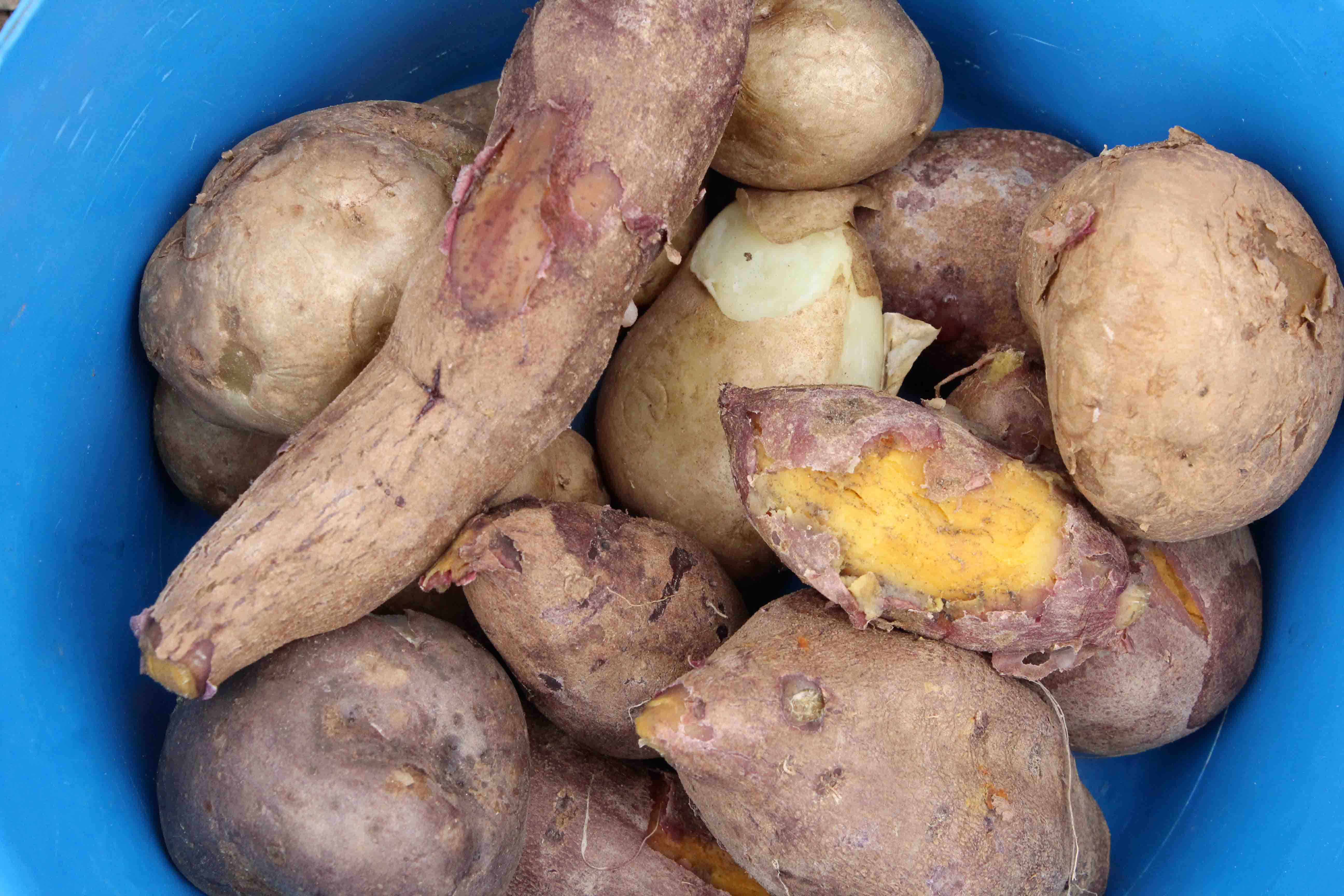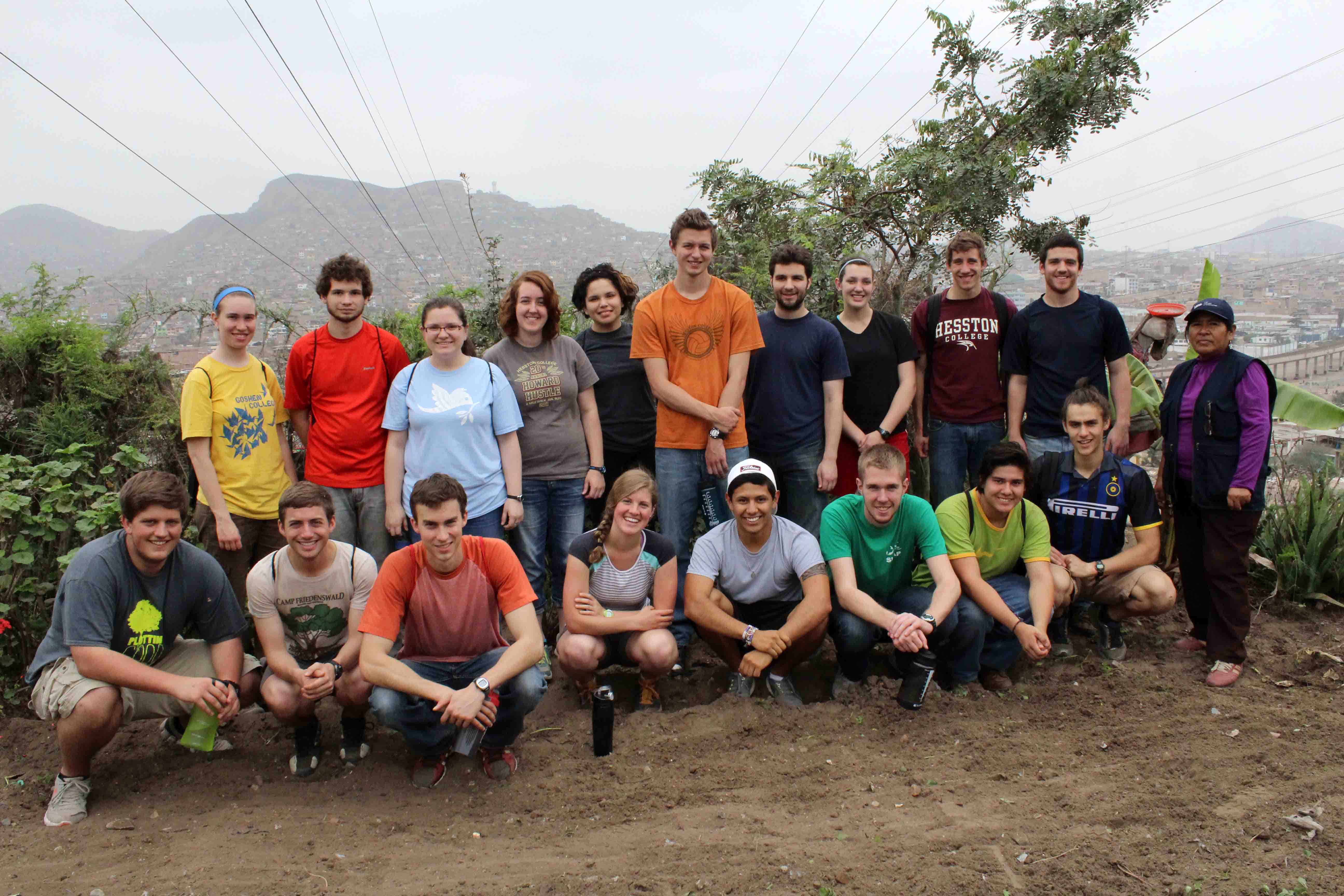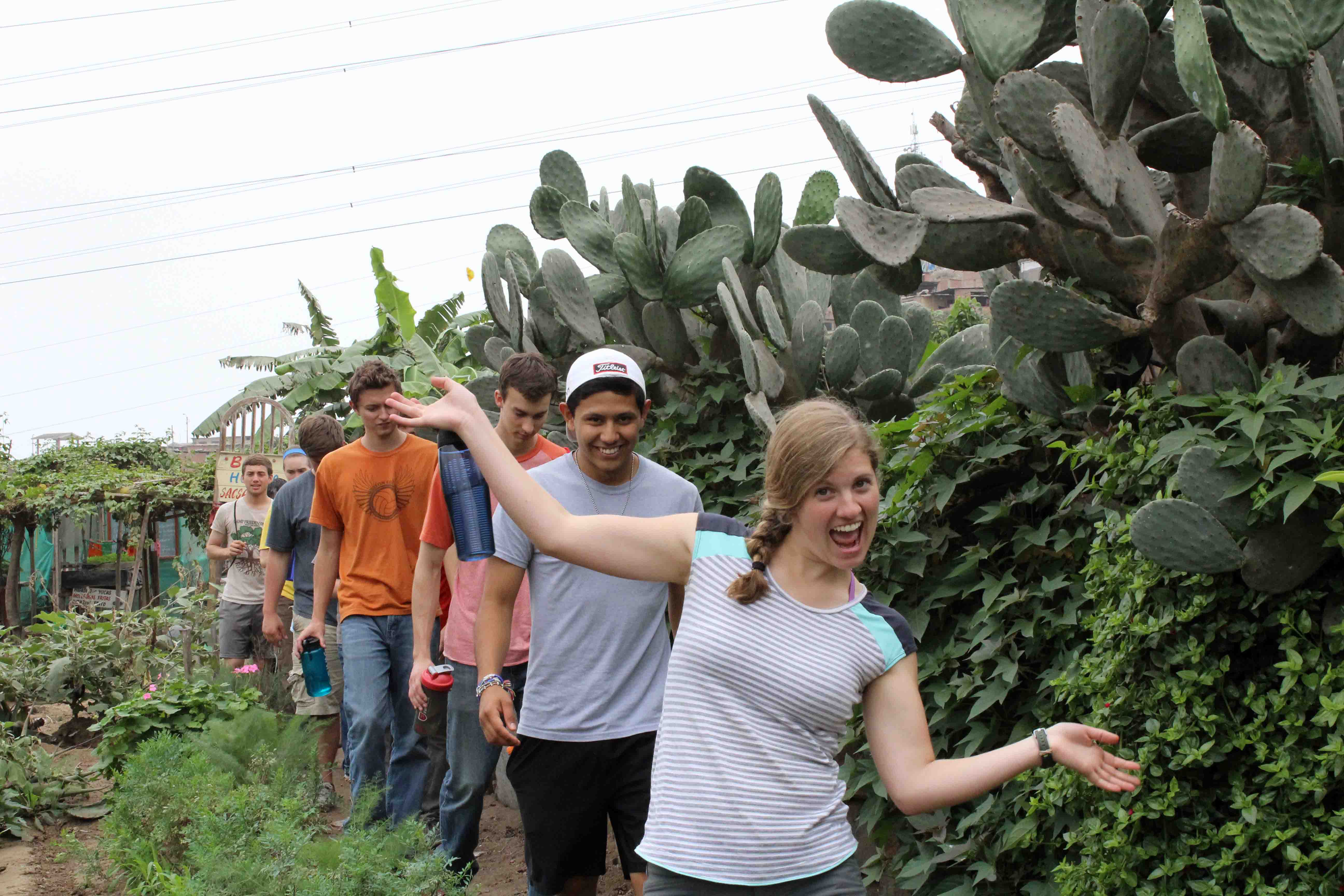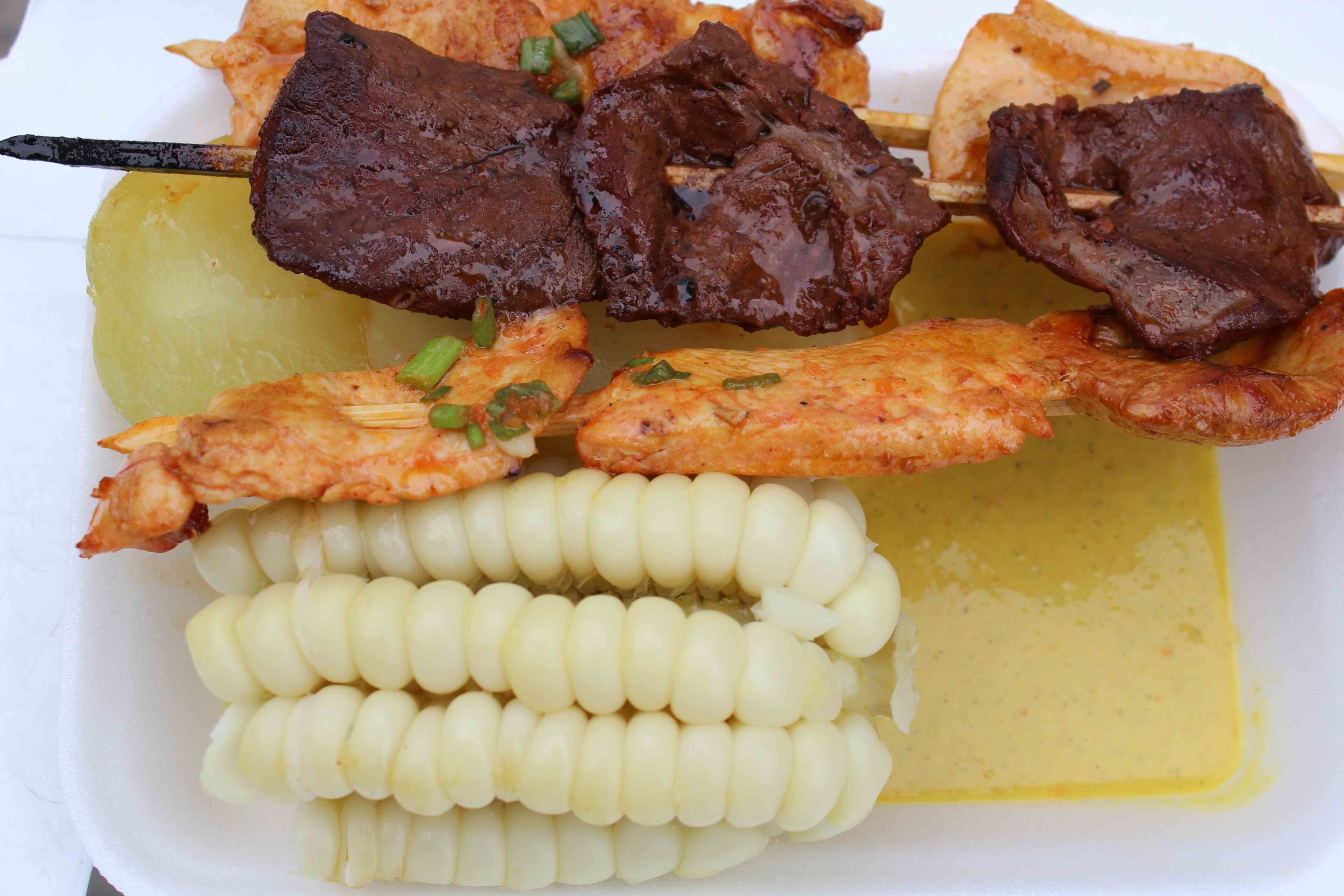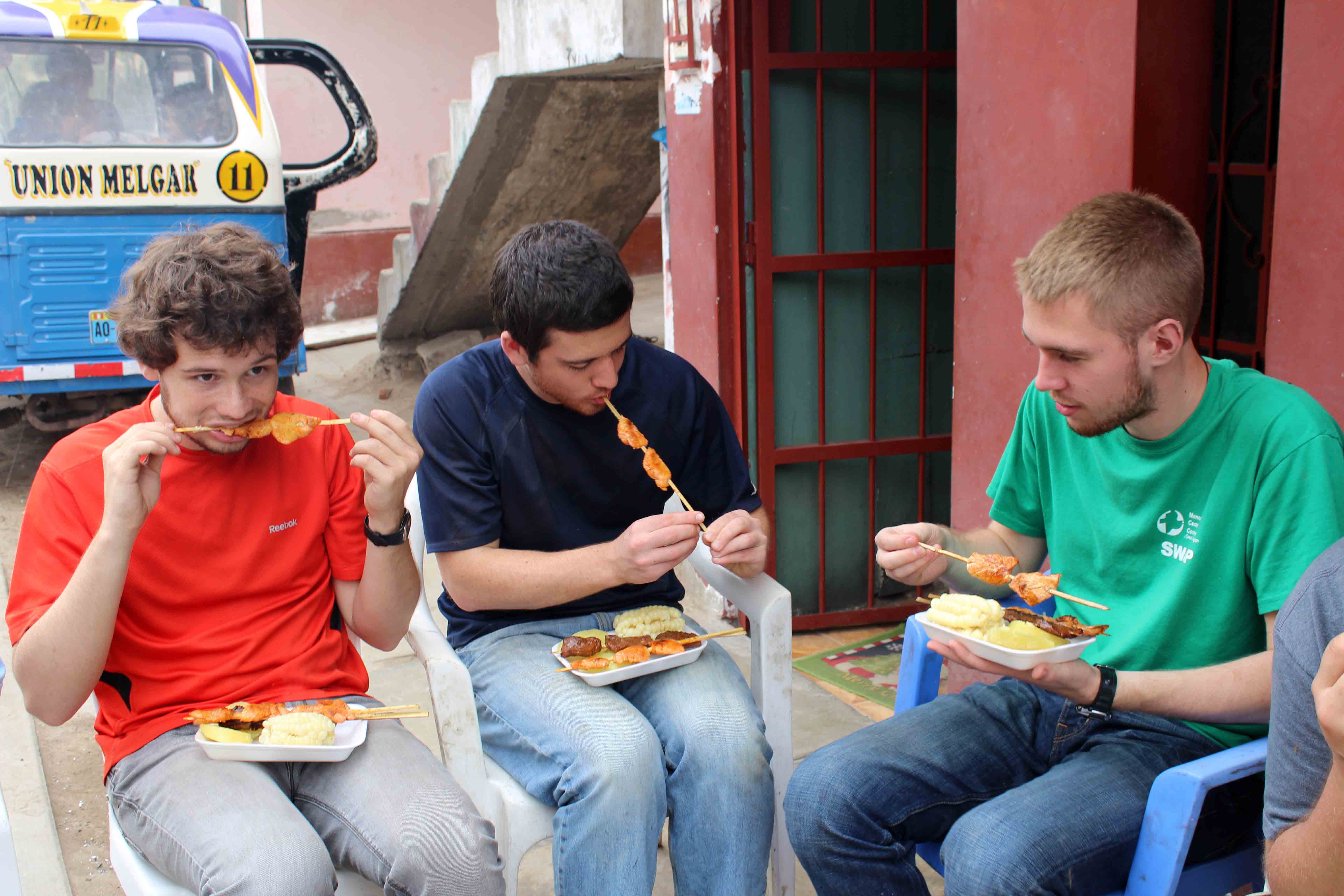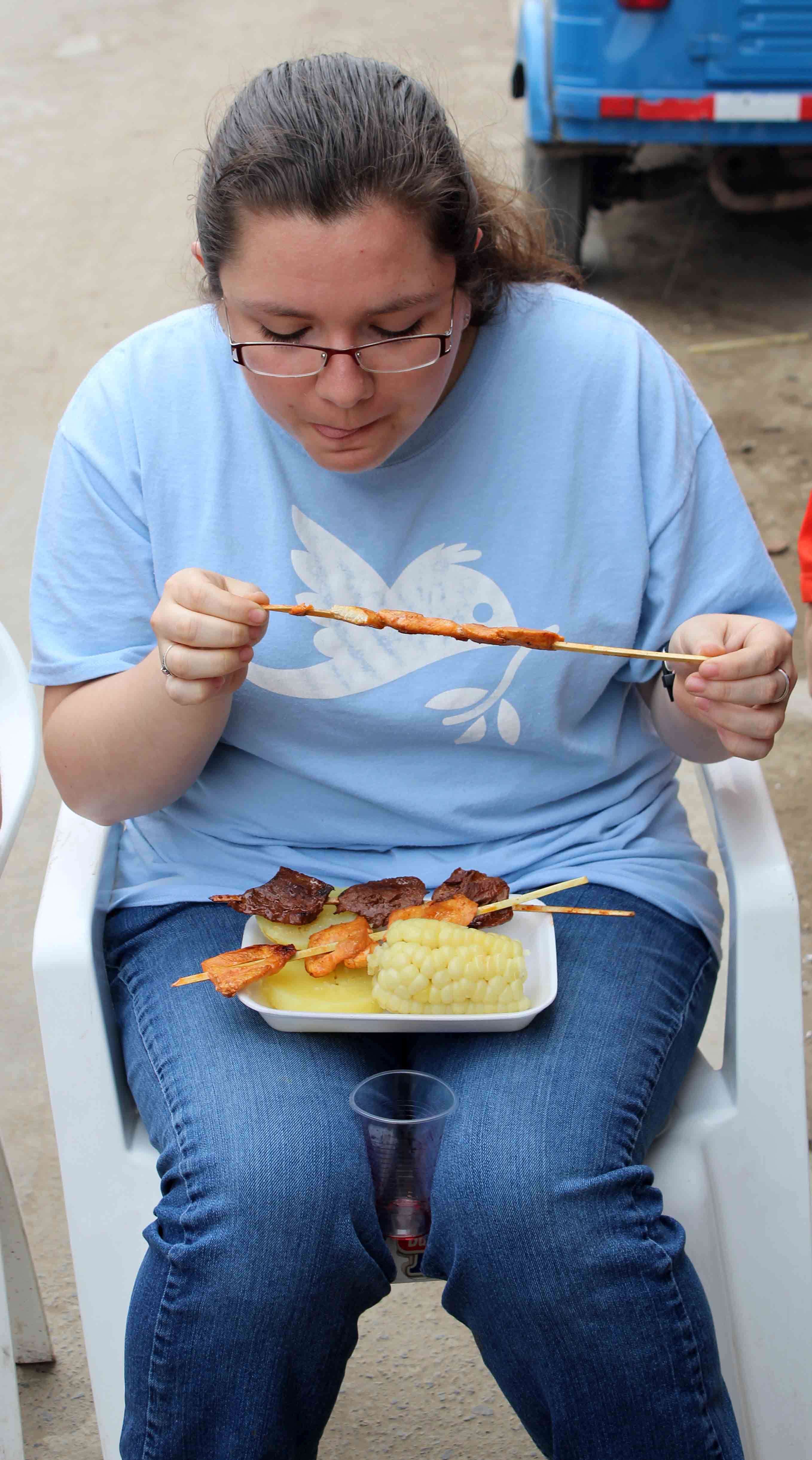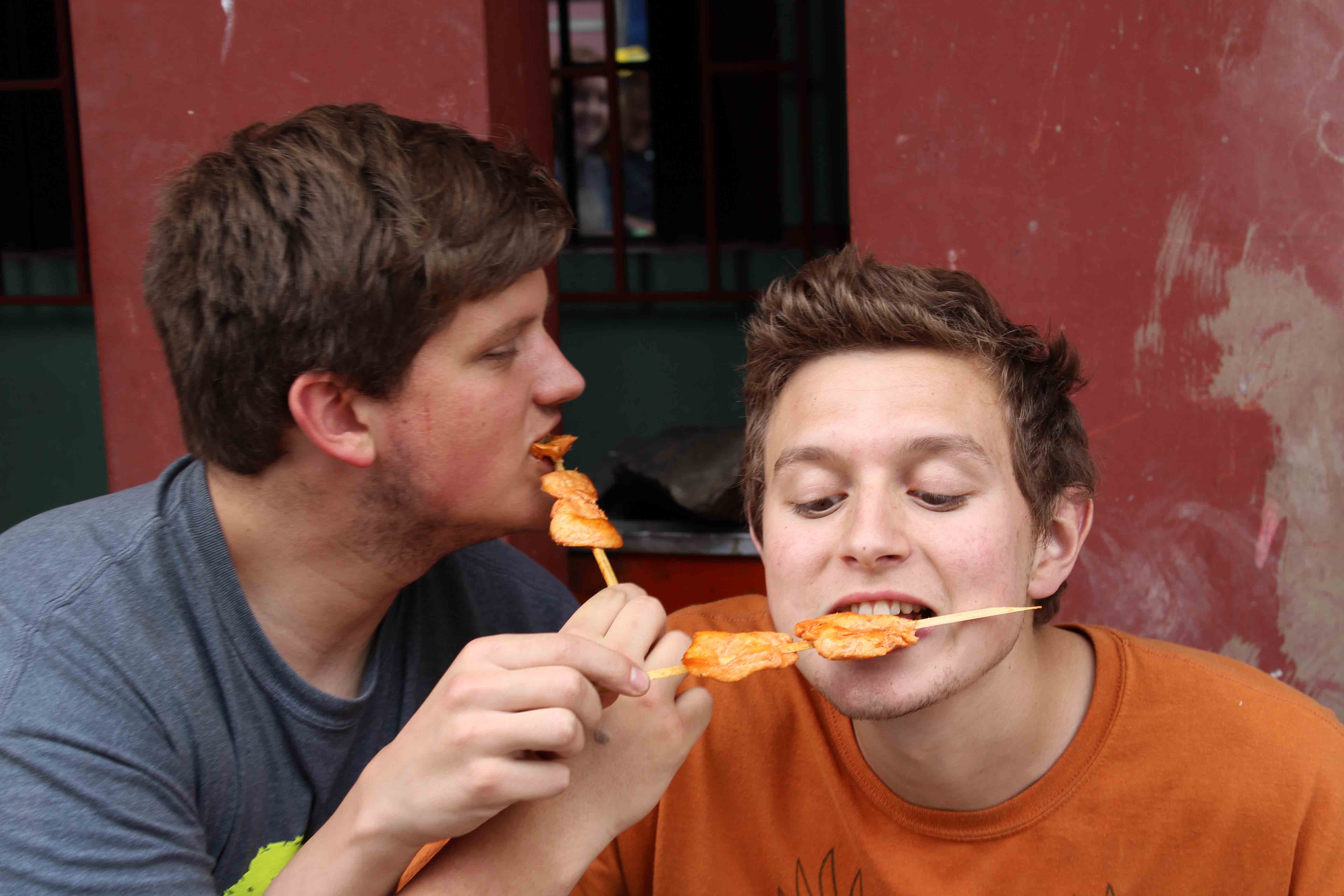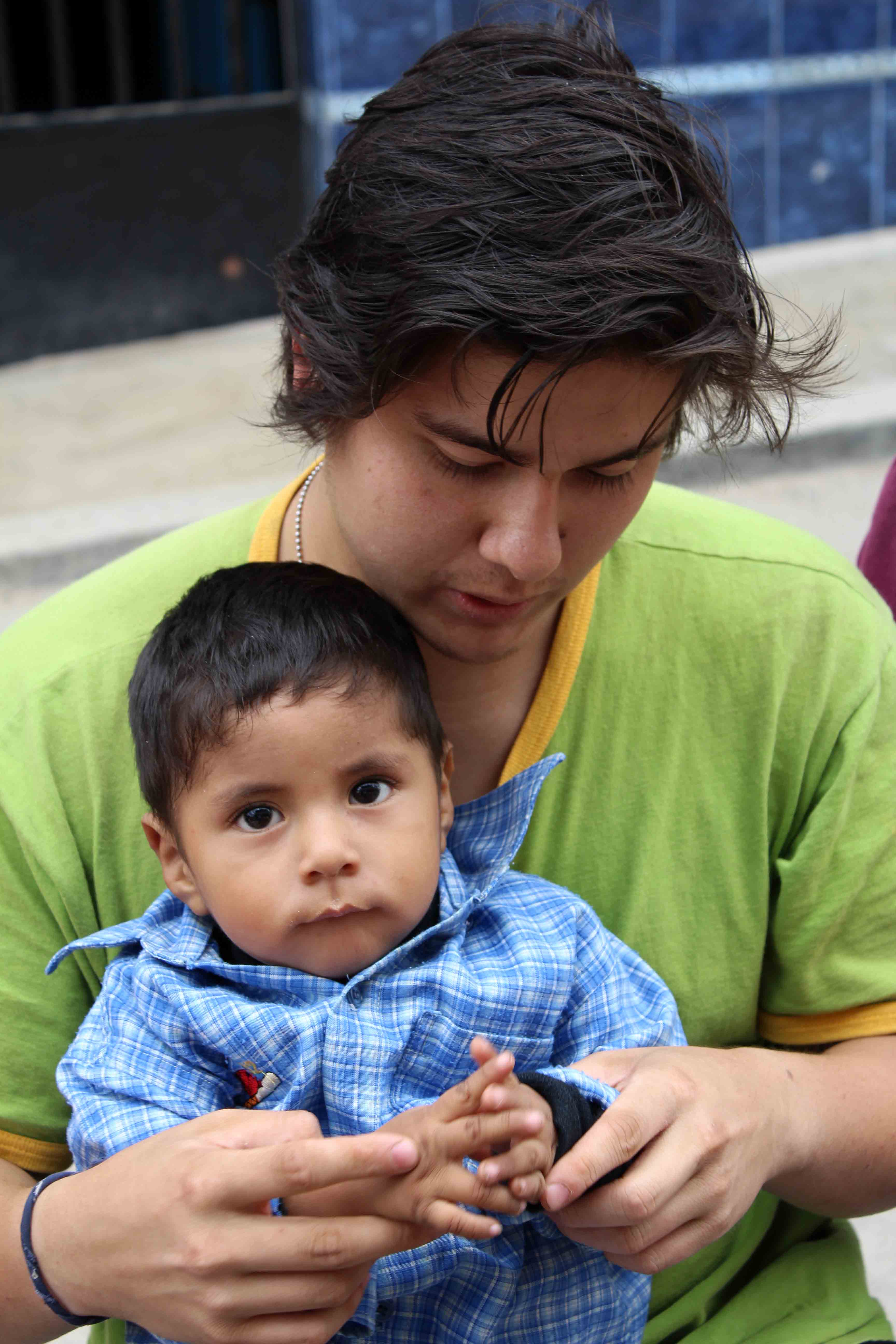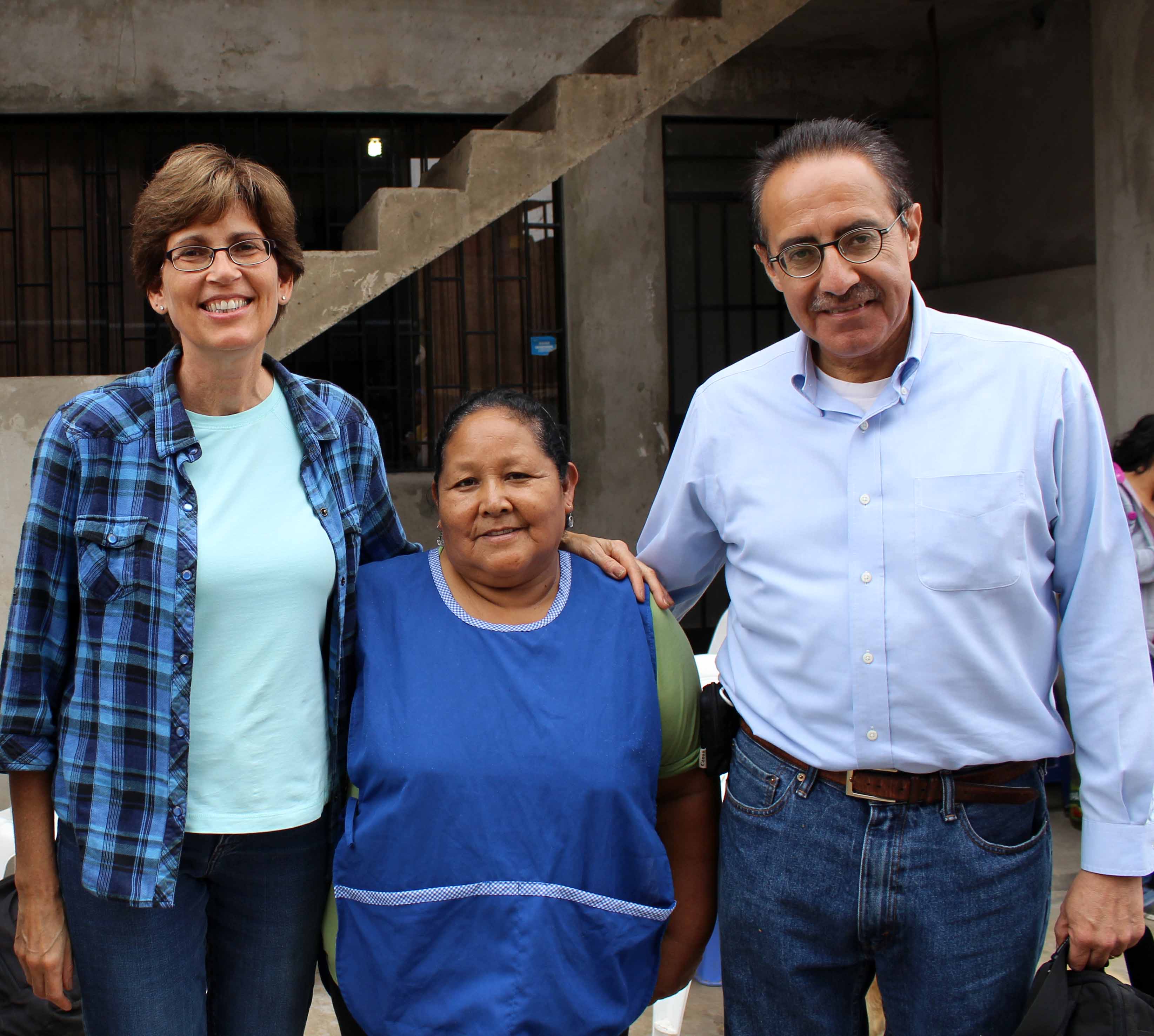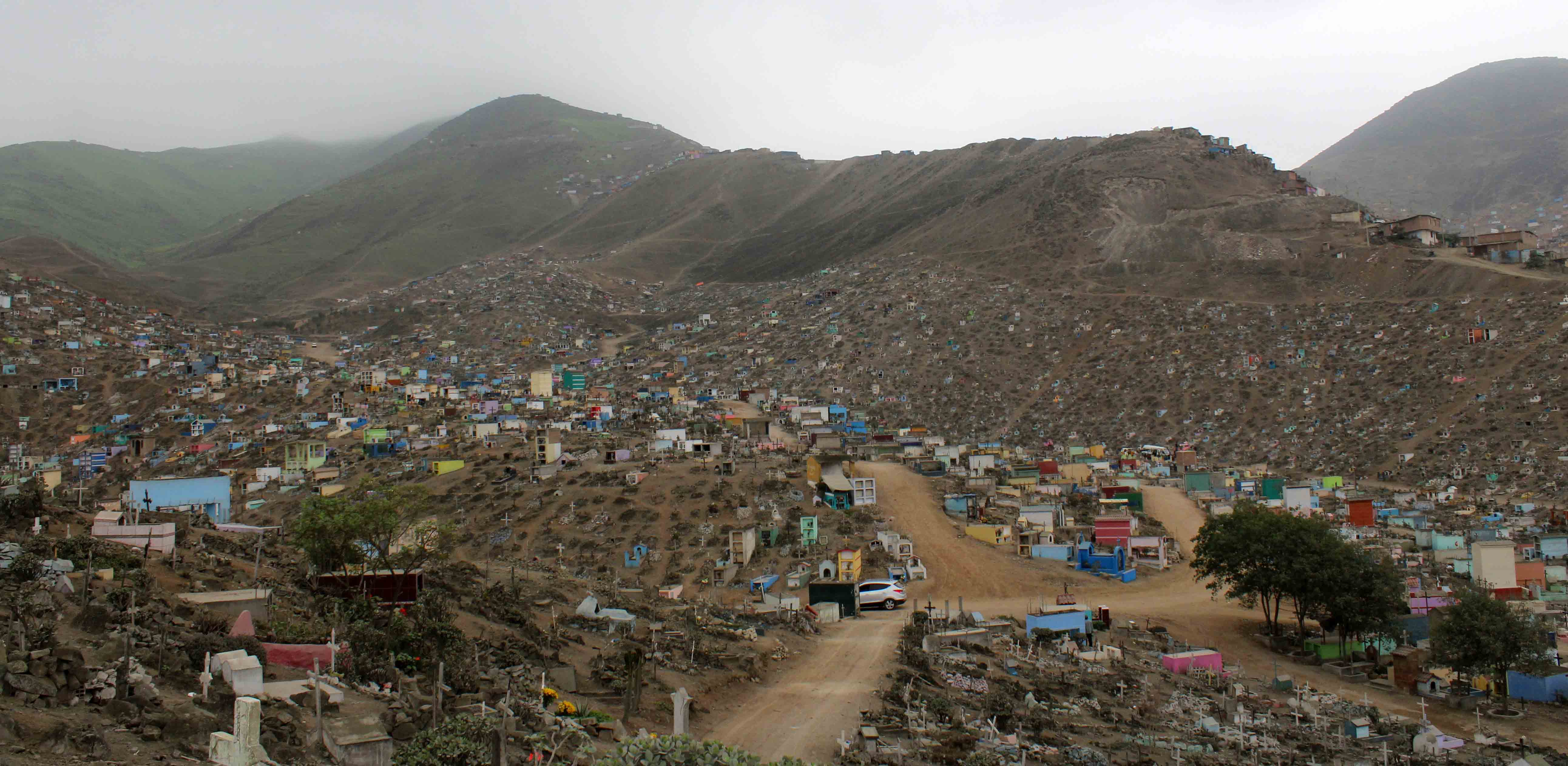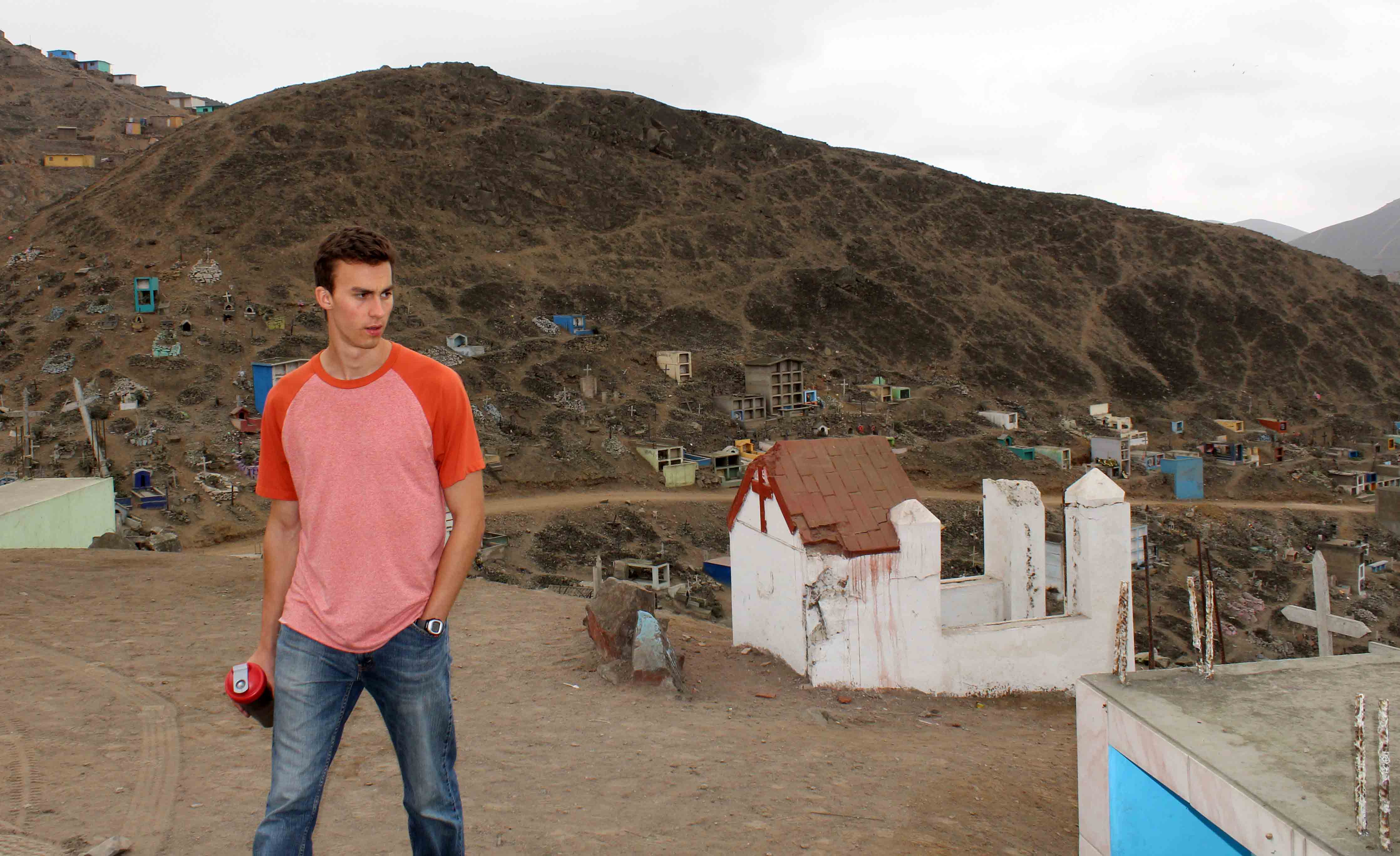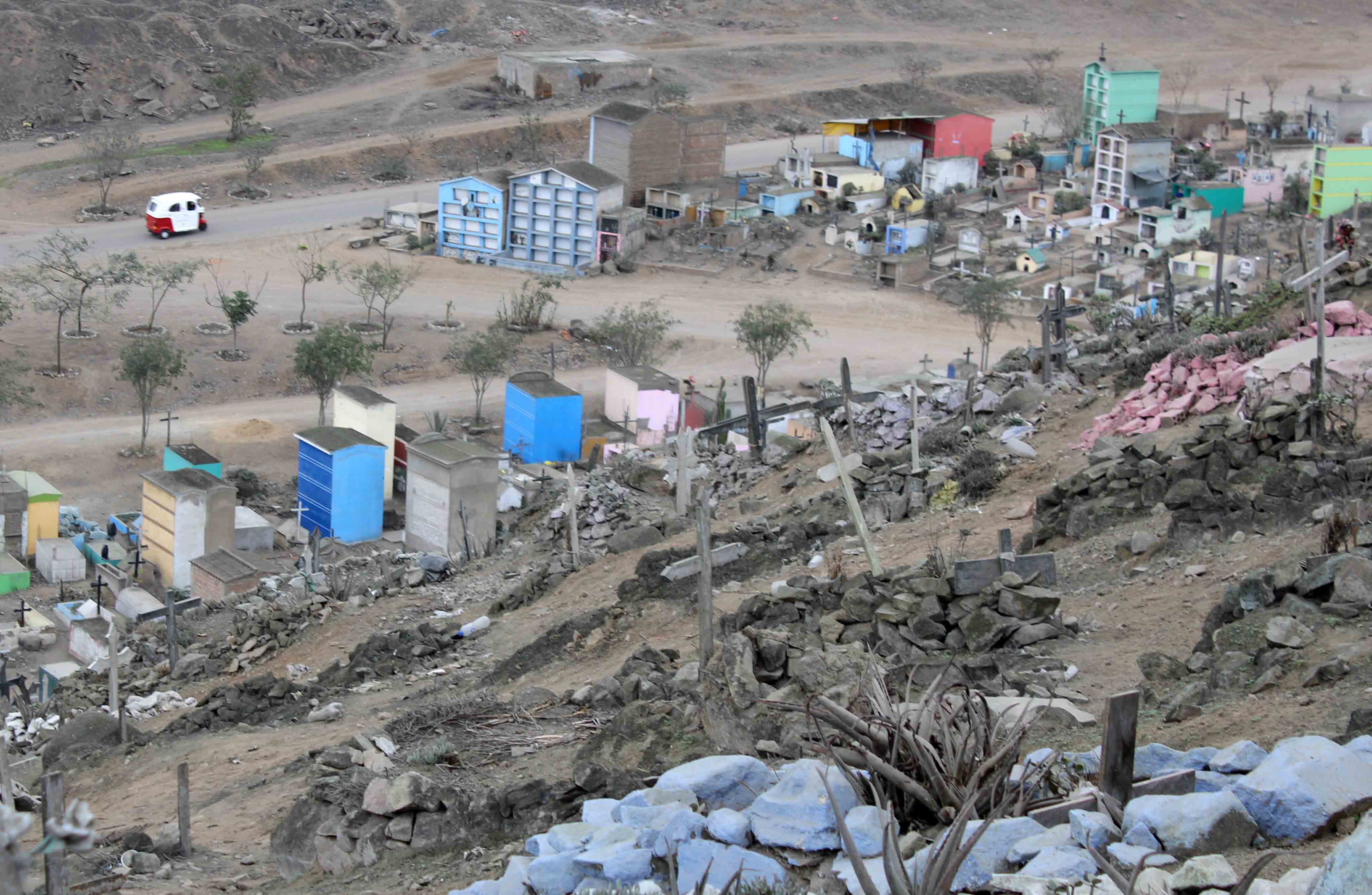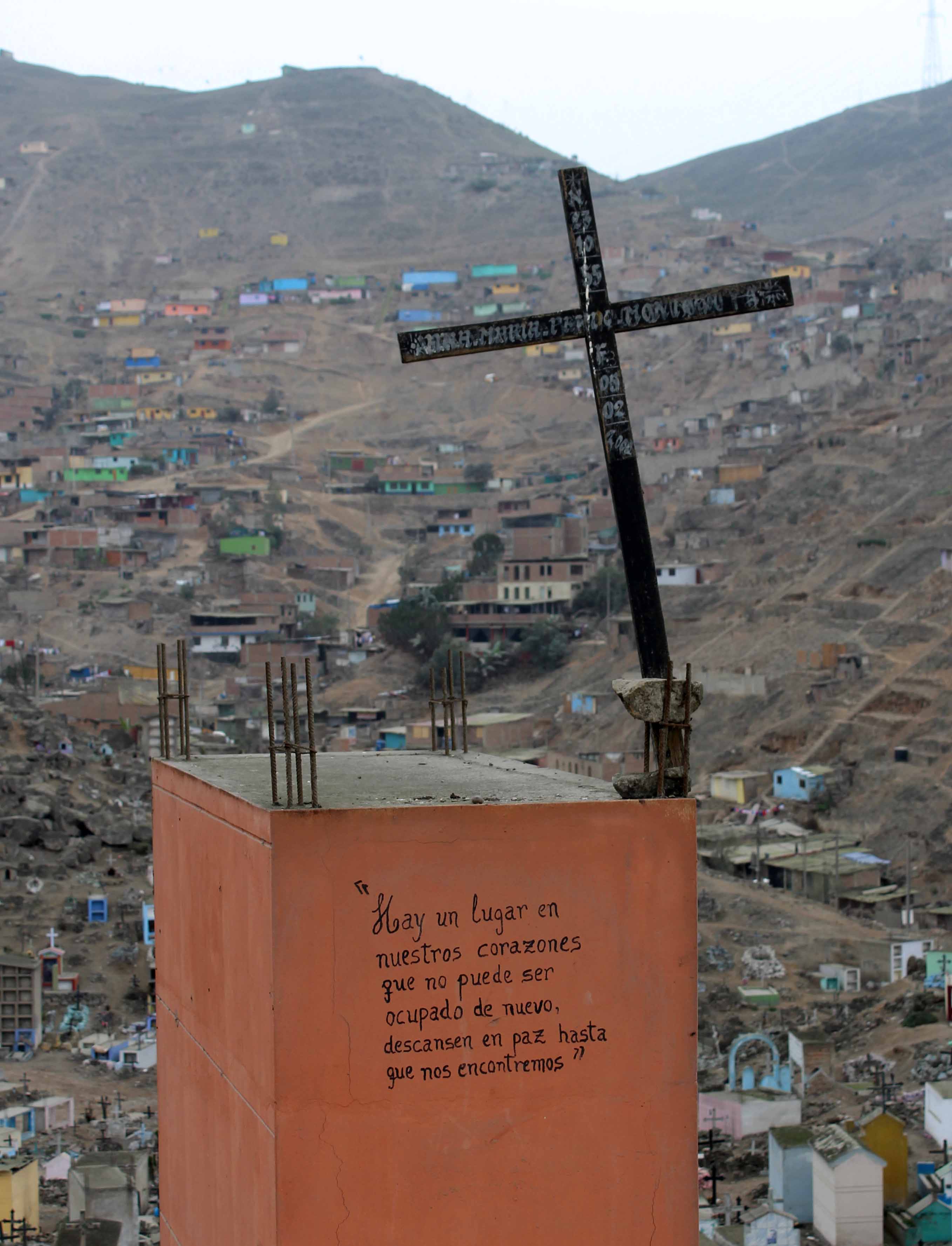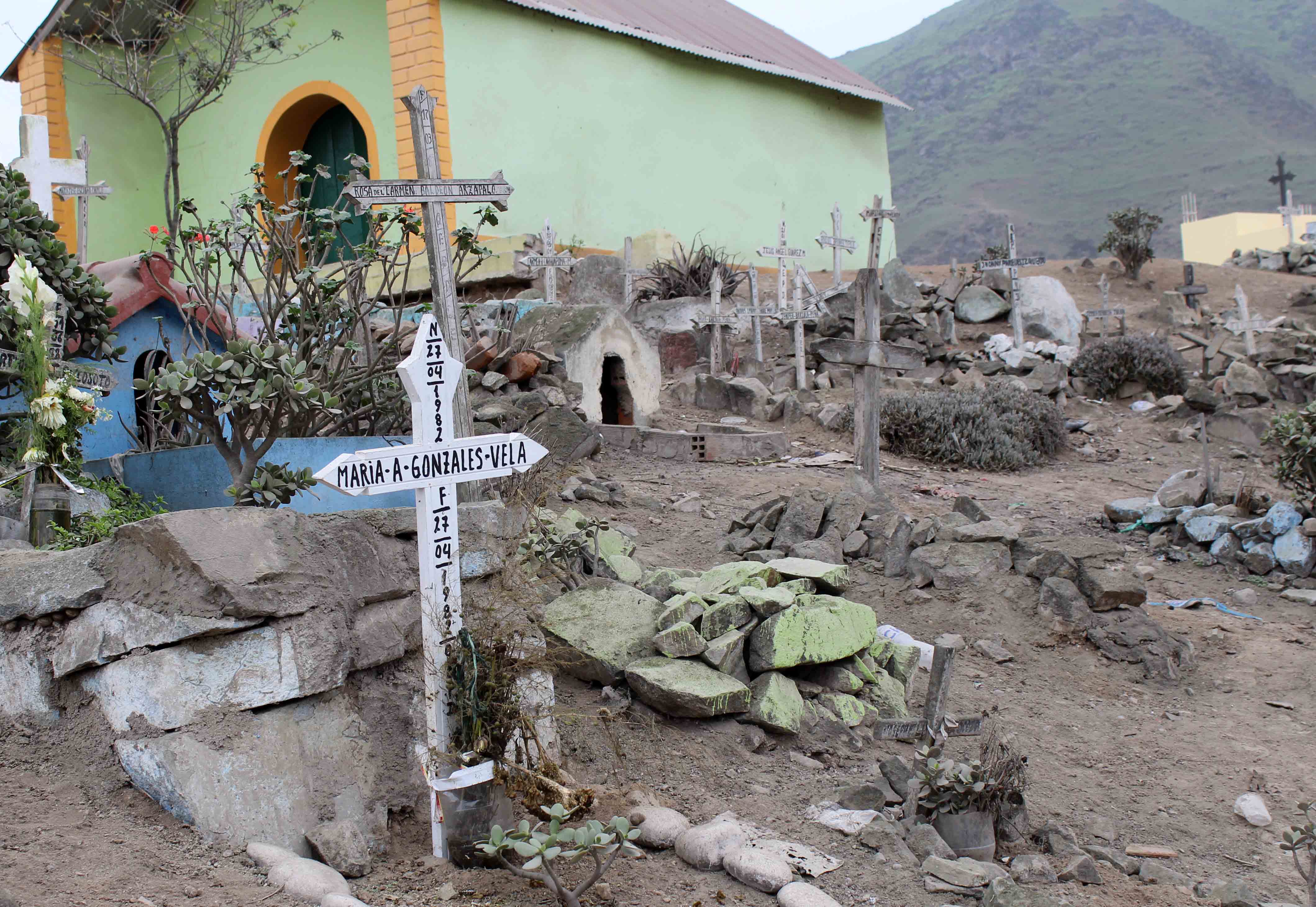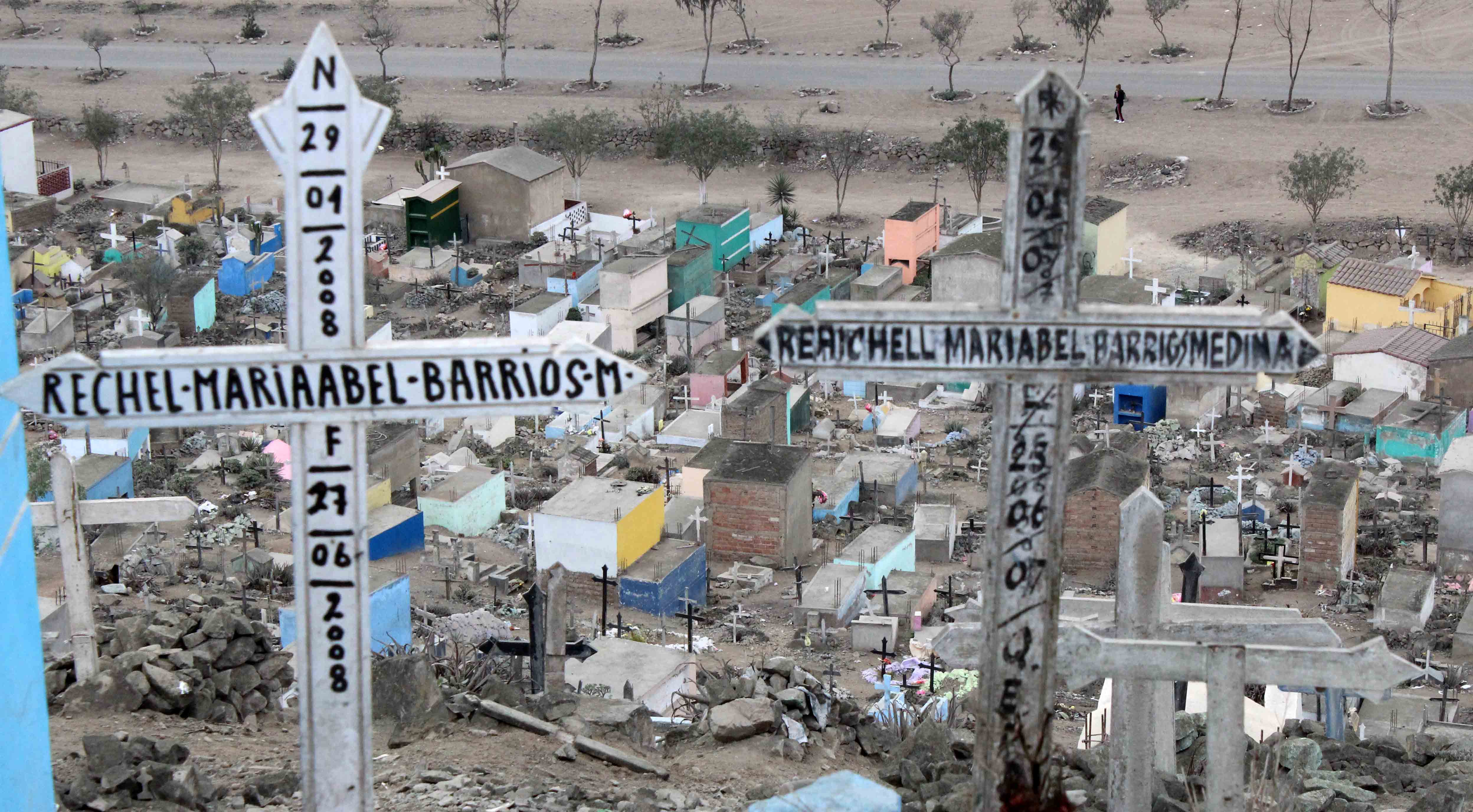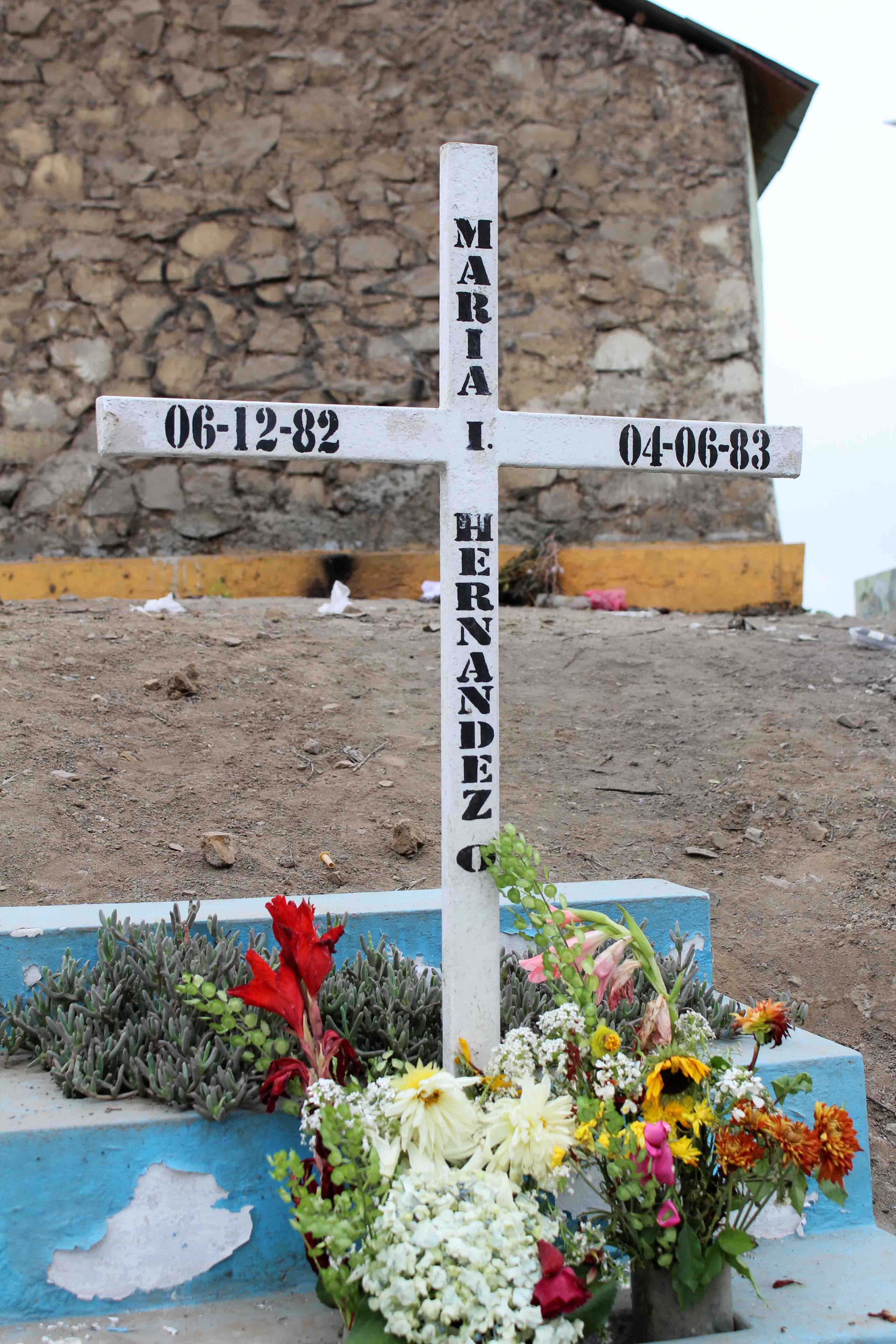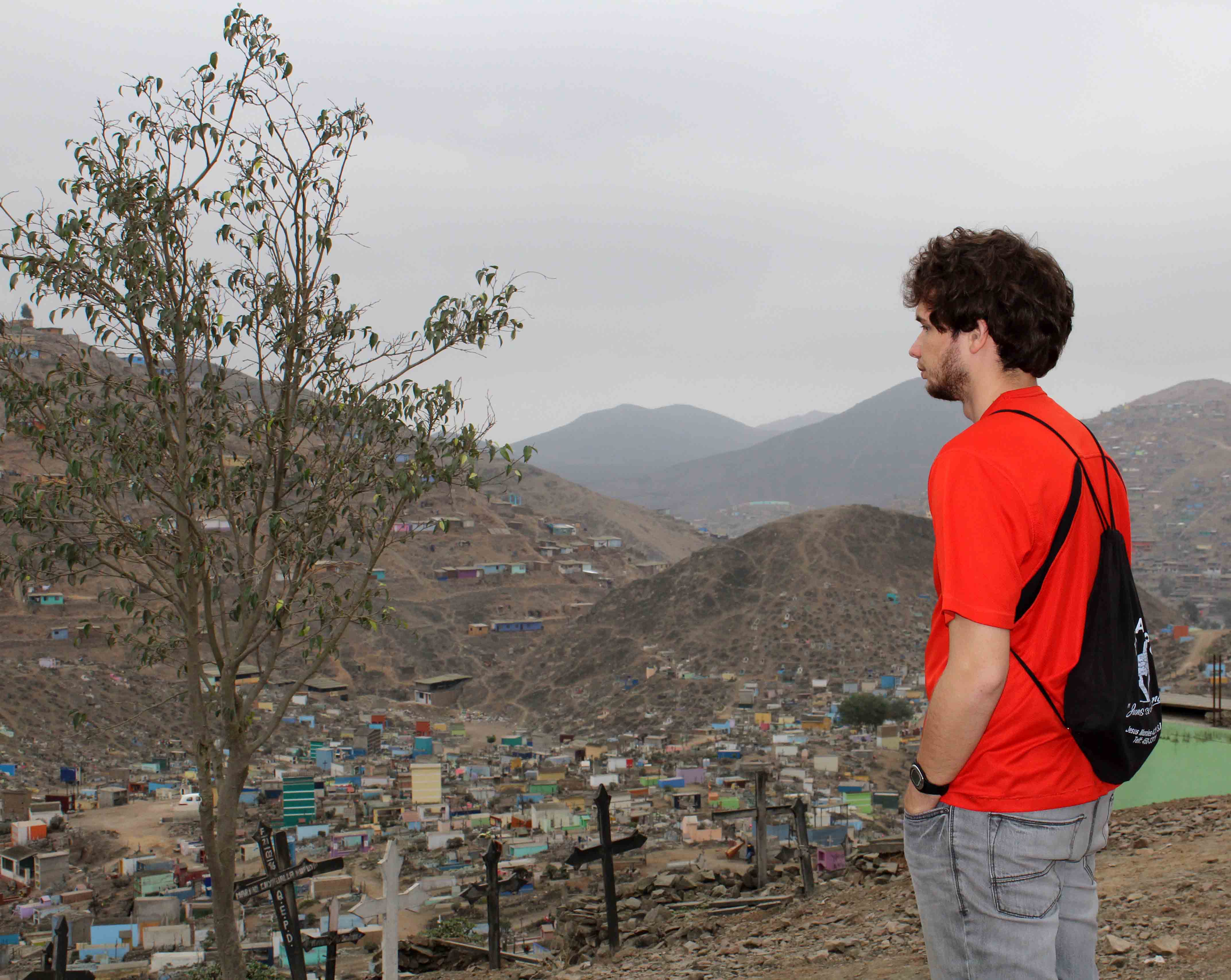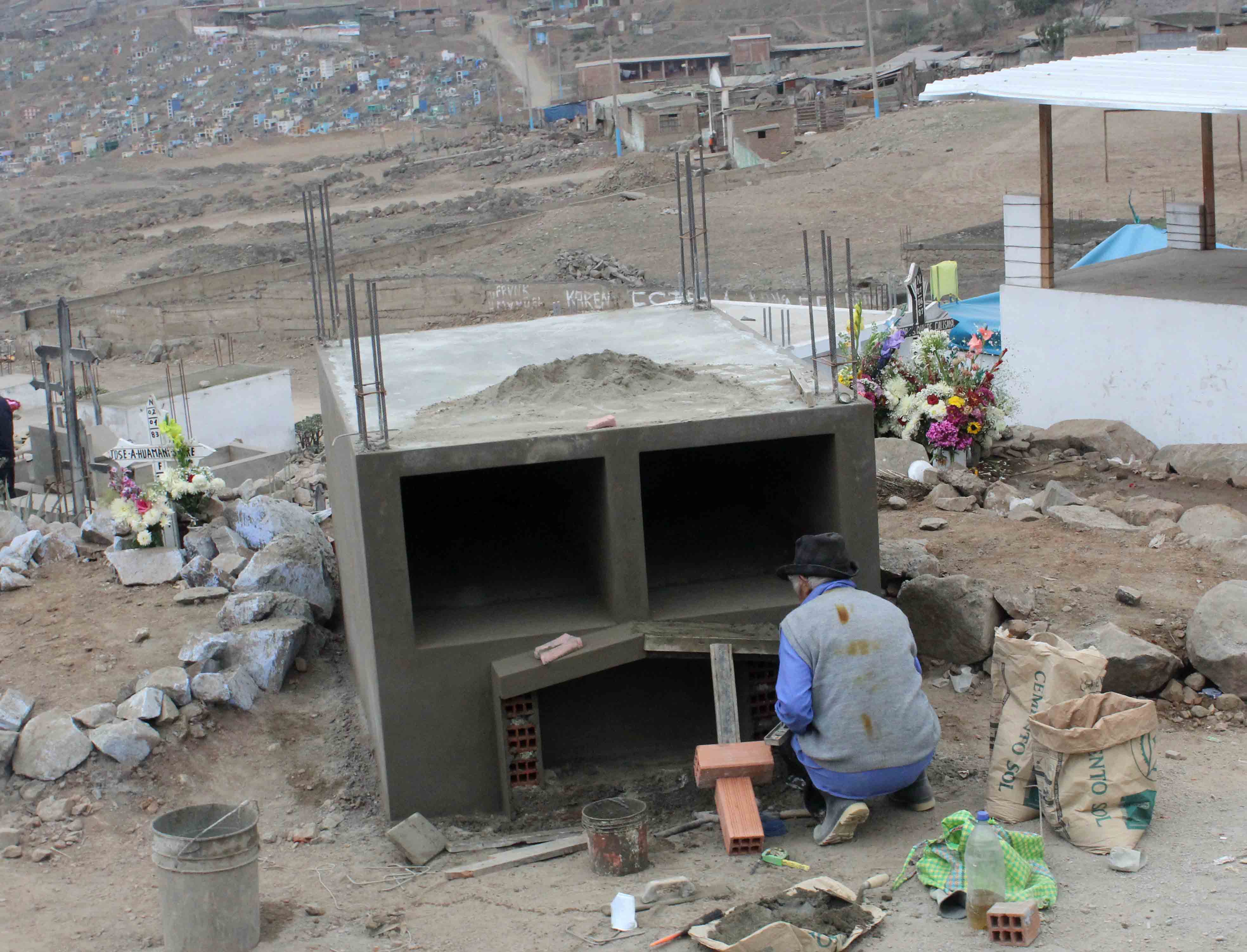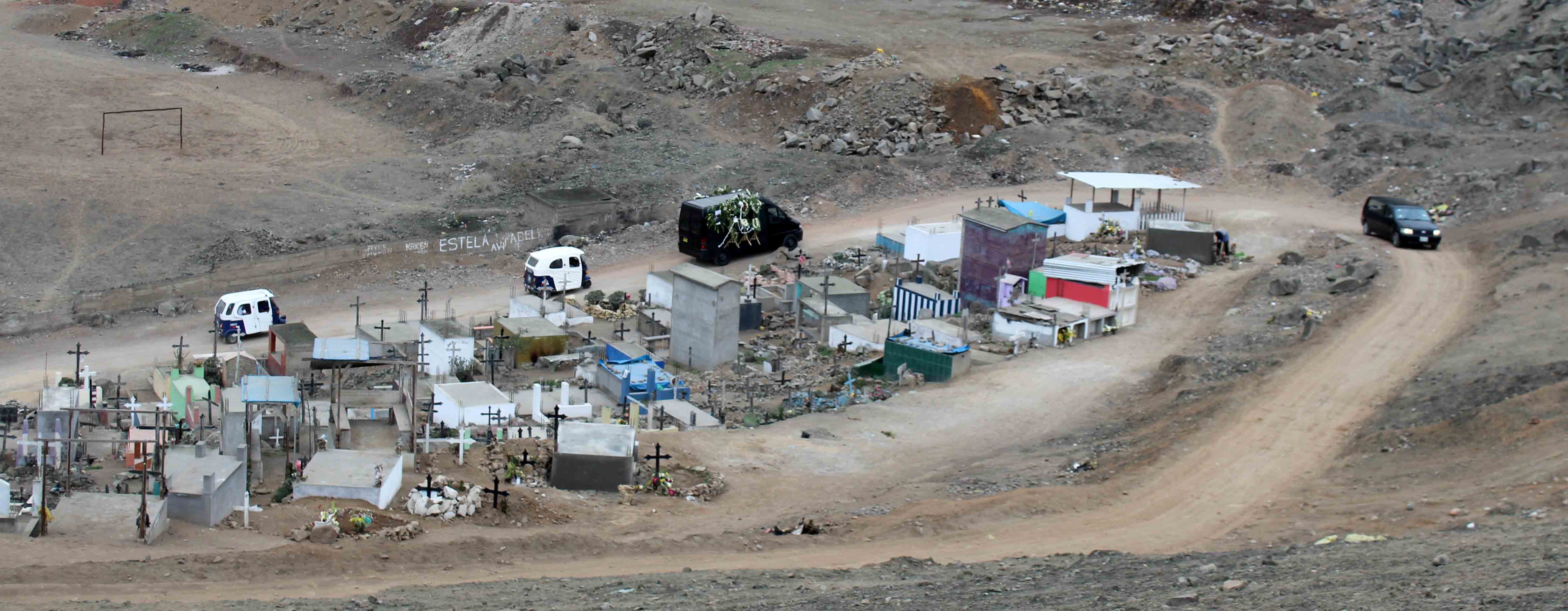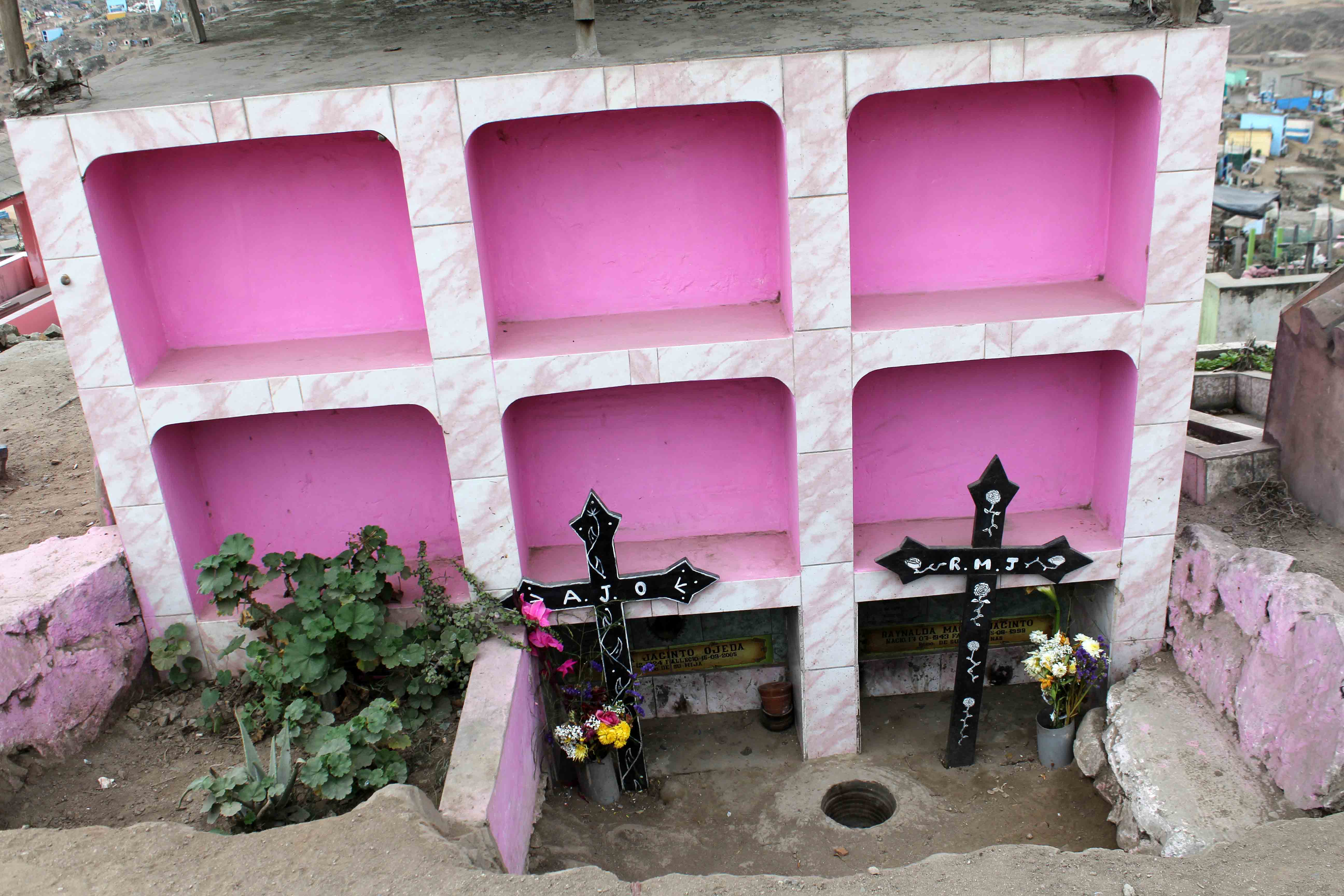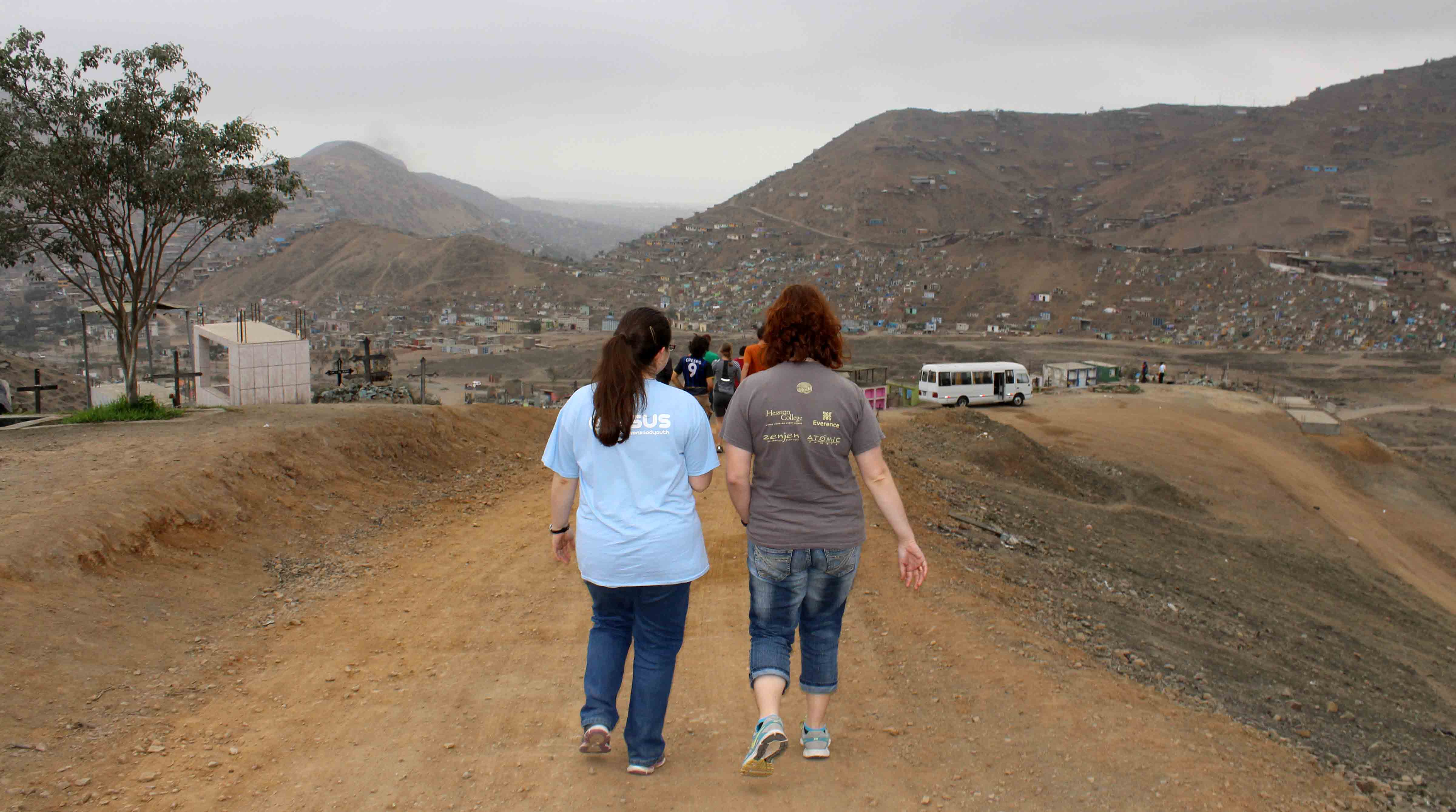Raising joy in the garden
It’s a cloudy June day, and Señora Gregoria Flores meets us under the canopy where the gardeners scheme. This is where they plan their attack: The tilling and composting, the seeds sprinkled in neat rows, the watering. They will deploy beat-up old spades and rusty picks and leaky hoses. They plan planting and plot plots.

The chalkboard in the little meeting area is full of beautiful Spanish garden words that roll off the tongue like smooth pebbles: rabanita, betarraga, espinaca, acelga, camote, abono (radish, beet, spinach, chard, yam, fertilizer). In a few months, the gardeners will be eating the organic veggies and selling them at a local market.
Goshen College students and faculty are here to help because this is no ordinary garden. It is a green oasis planted beneath massive electrical towers and rows of wires in one of Lima’s poorest districts. Before the garden, Gergoria tells us, the sandy ground beneath the power lines was a garbage-strewn no-man’s land where street gangs clashed. The urban garden was created by a coalition of the power company (which provides the land, seeds and Gregoria’s salary), the municipality (which provides the water) and community members, who do the gardening and keep their harvest.

The students introduce themselves, and Gregoria pauses at Joel’s name. She had a son named Joel, she tells us quietly. She was devastated when he died as a young teen. She took the job leading the urban garden to try to distract herself from her sorrow. The garden has been her therapy. The same is true for the gardeners, who arrived here as refugees from the Andes, escaping the Shining Path war in the 1980s and 1990s or later seeking opportunities for work and education. Most of the residents of this area live on very little. Gregoria teaches them how to raise plants they didn’t know in the mountains and gives them recipes and suggestions for adding the vegetables to their diets.
We get to work. Goshen students have come to work in the biohuerto, as the garden is called in Spanish, three times a year for many years now. GC students helped clear the trash in the beginning, and various groups have prepared the soil, planted and weeded. Today the work at hand is to dig rows and plant sweet potatoes starts and chard and radish seeds. Our students go at it with a will alongside the gardeners: Pablo, Felicitas, Marina, María, Felipe, Catalina, David, Oscar and Graciela. It is a satisfying morning for students missing their summer gardens up north.

Later, we enjoy anticuchos at the home of Alicia Taipe Tello, who cooks for the group twice a week and lives just a few blocks from the garden. Anticuchos, skewers of marinated, grilled meat, is a popular Peruvian street food that goes back to Inca times. Alicia’s are superb, made with beef heart and chicken.
After lunch, we pile back into our bus to visit the nearby Nueva Esperanza cemetery. Like the district of Villa Maria del Truinfo in which it is located, the cemetery began as an illegal settlement. As refugees from Peru’s interior built their homes and claimed the land, they needed somewhere to bury their dead. The cemetery grew up at first in a haphazard way, becoming one of the largest cemeteries in Latin America. It is the site of a huge, three-day celebration around All Saint’s Day, or the Day of the Dead – Halloween in the U.S. Alicia has buried several family members there and regularly visits the graves. These days, new squatter communities are perched on surrounding hillsides; the living and dead are side by side.

It was a satisfying day, and a view of life (and death) in a different district of the sprawling amalgam of cultures that is Lima.
Here is an original recipe for a moist and delicious spinach cake from one of the biohuerto gardeners, Alicia’s sister, Marta Taipe Tello.
Marta’s Spinach Cake
Ingredients:
½ kilo plus 1 cup white flour (about 3 cups) 300 grams butter or margarine (1 cup)
8 eggs
1 tsp. baking powder
1 kilo cleaned, raw spinach leafs, roughly chopped (4-5 cups)
1 can condensed milk
½ kilo white sugar (2 cups)
Vanilla
Sift the flour and combine with the tsp. of baking powder
Liquefy the spinach together with the milk in blender
Beat the butter and sugar until well blended
Add 8 egg whites, but no yolks and mix well
Stir in the flour slowly, alternating with the spinach mixture. Mix well each time.
The batter will not be very thick
Stir in the vanilla and 2 egg yolks until well-blended
Pour into an oiled Bundt pan and bake at medium heat.
When it begins to smell baked, check doneness with a toothpick. Cake is done when toothpick comes out clean.
Possible variations are carrots and beets – chop fine before blending with milk. With carrots the cake does not rise as much, but is still delicious.

